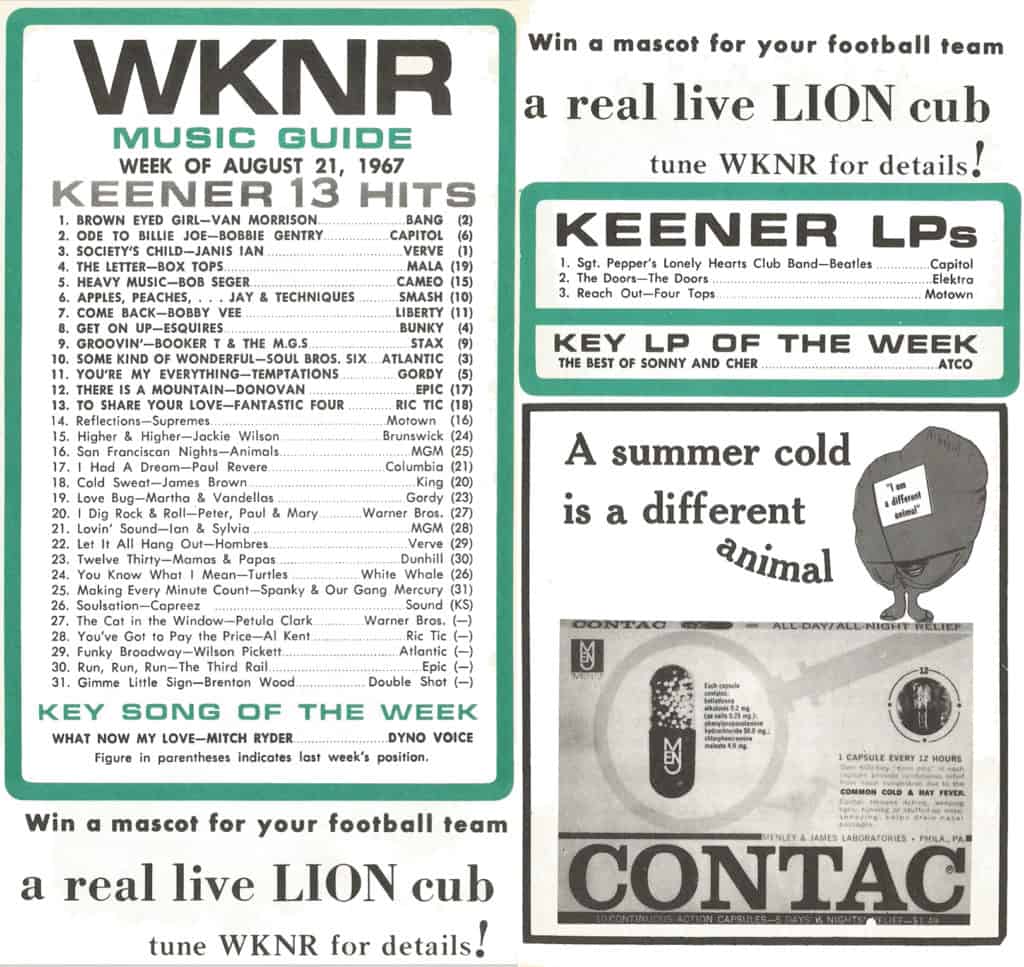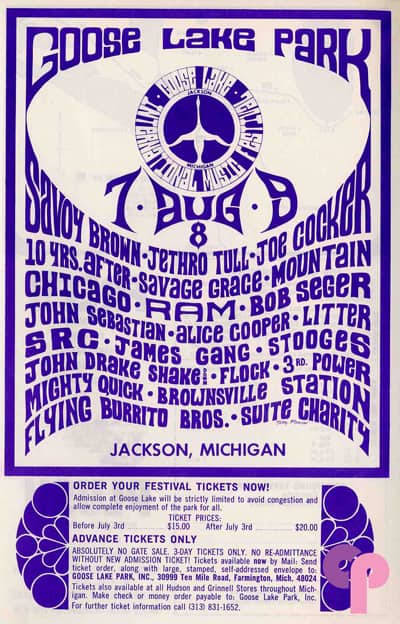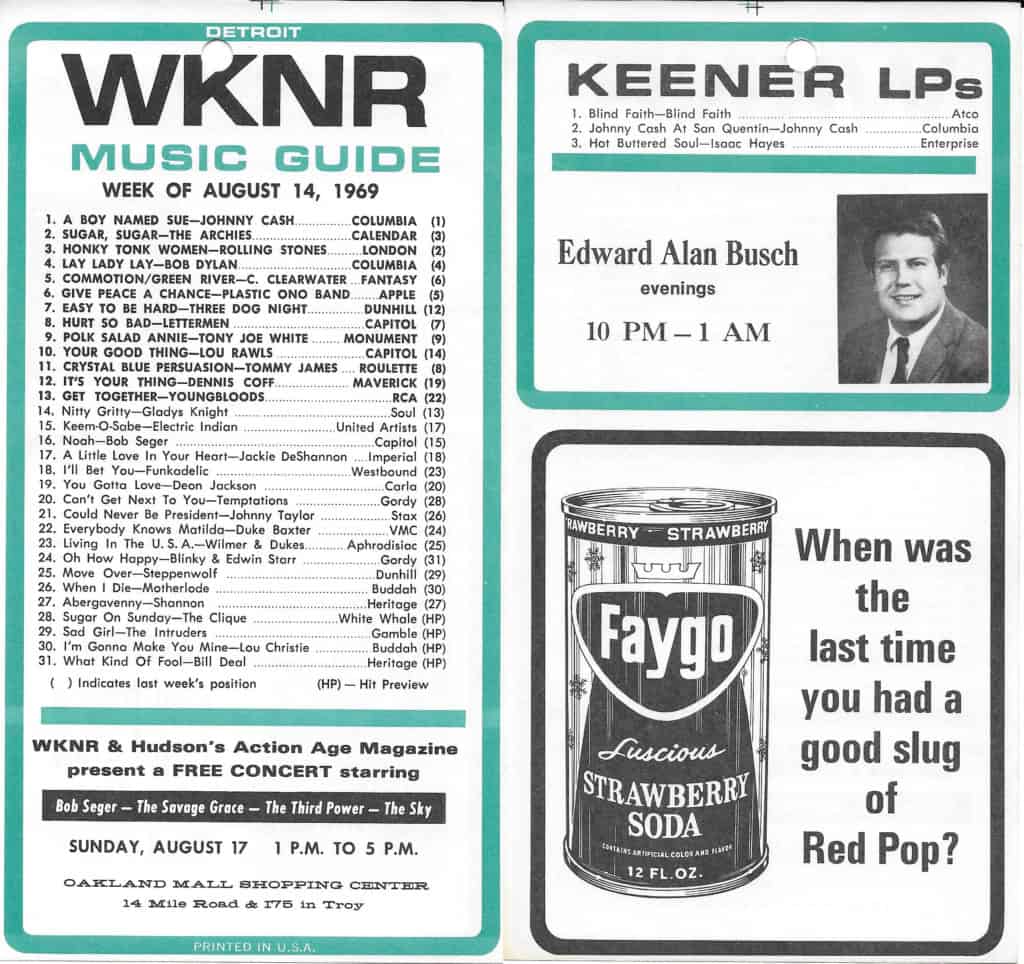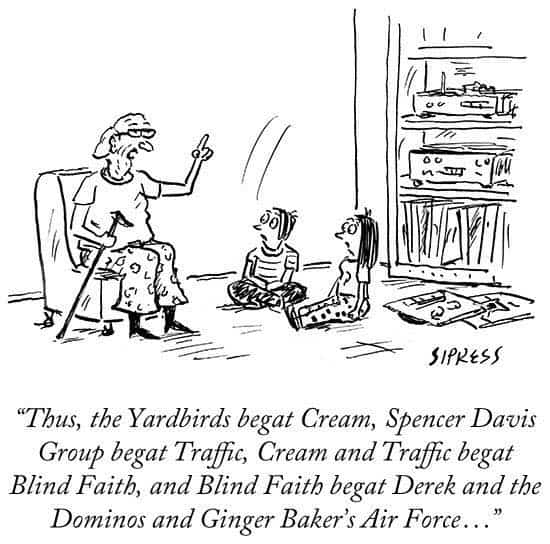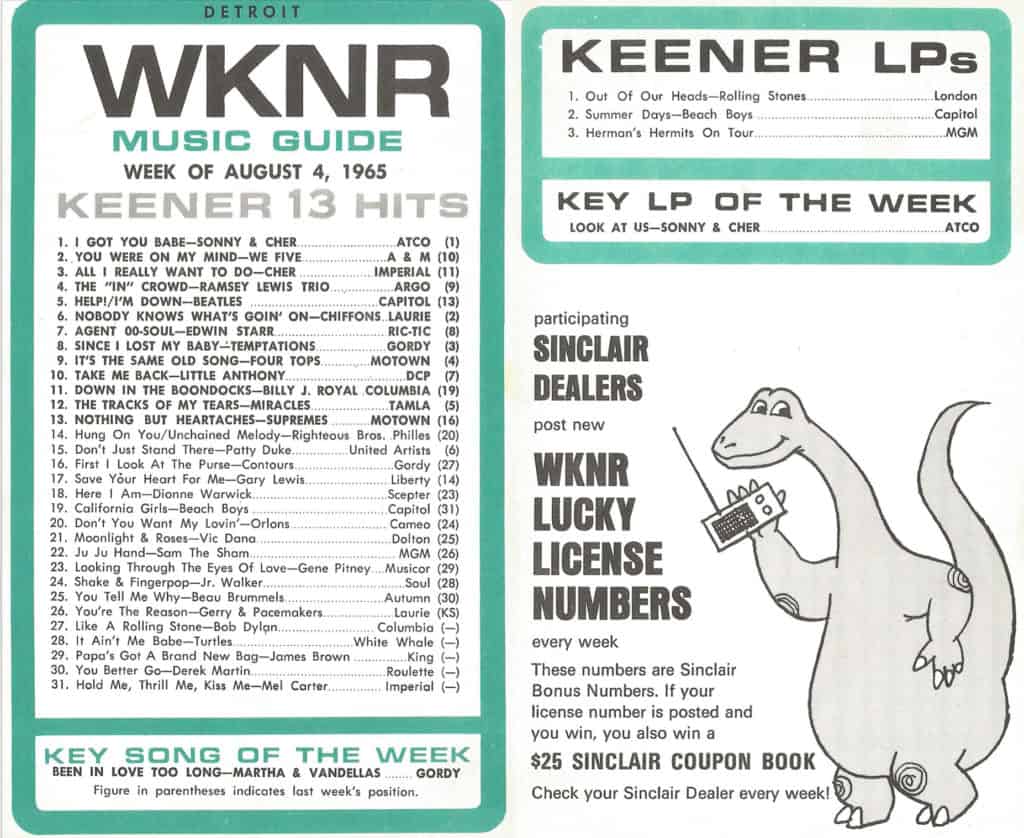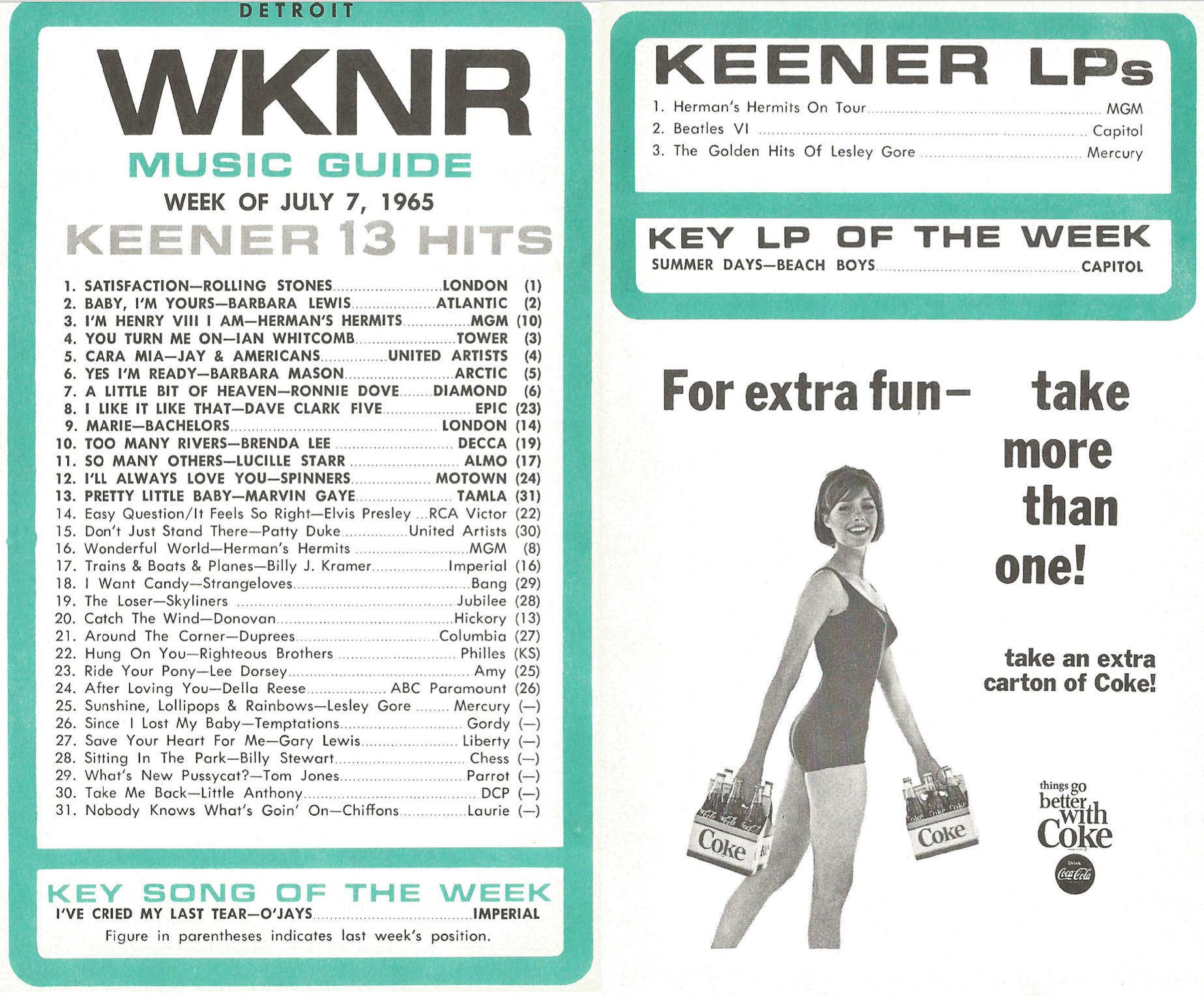Keener on Spotify
During Keener’s prime, the station released a four albums of “Oldies But Goodies”; collections of hits from the recent past that continued to find their way onto the hitlines and the WKNR playlist. You can enjoy these, along with curated playlists of other Keener faves by visiting our Spotify page. Here are direct links to each of the LPs. Only two of the tunes (marked with an *) are not currently in the Spotify library. Click on the album covers to go directly to the playlist.
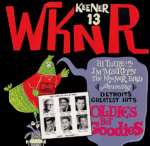 Sandy Nelson – Teen Beat
Sandy Nelson – Teen Beat
Gene Chandler – Duke Of Earl
Dee Dee Sharp – Mashed Potato Time
Bobby Rydell – Kissin’ Time
Hollywood Argyles – Alley-Oop
Bobby Day – Rockin’ Robin
The Skyliners – Since I Don’t Have You
Jerry Butler – He Will Break Your Heart
The Paris Sisters – I Love How You Love Me
Dee Clark – Raindrops
Rosie & The Originals – Angel Baby
Ritchie Valens – Donna
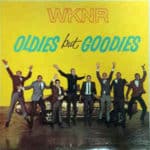 Chris Montez – Let’s Dance
Chris Montez – Let’s Dance
The Shirelles – Soldier Boy
Del Shannon – Runaway
Kathy Young – A Thousand Stars
The Volumes – I Love You
J. Frank Wilson – Last Kiss
Ritchie Valens – La Bamba
Gary U.S. Bonds – New Orleans
Bobby Darin – Mack The Knife
The Jarmels – A Little Bit Of Soap
Maurice Williams – Stay
The Drifters On – Broadway
Dion – Run Around Sue
The Champs – Tequila
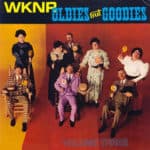 The Castaways – Liar, Liar
The Castaways – Liar, Liar
The Blue Jays – Lovers’ Island
The Dixie Cups – Chapel Of Love
The Tymes – So Much In Love
Jewel Akens – The Birds And The Bees
Terry Stafford – Suspicion
Little Caesar & The Romans – Those Oldies But Goodies
The Chiffons – He’s So Fine
Ronnie Dove – Say You
Barbara George – I Know
Dale & Grace – I’m Leaving It Up To You
Joey Dee & The Starliters – Peppermint Twist
The Essex – Easier Said Than Done*
The Adlibs – The Boy From New York City
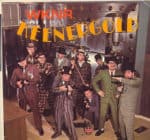 The Association – Along Comes Mary
The Association – Along Comes Mary
Fontella Bass – Rescue Me
Don & Juan – What’s Your Name
Bob Lind – Elusive Butterfly
The Newbeats – Bread And Butter
The Casinos – Then You Can Tell Me Goodbye
The Jaynetts – Sally, Go ‘Round The Roses
Curtis Lee – Pretty Little angel Eyes
The Five Americans – Western Union
Syndicate Of Sound – Little Girl
The Lovin’ Spoonful – Summer In The City
Count Five – Psychotic Reaction
James & Bobby Purify – I’m Your Puppet
Bobby Lewis – Tossin’ And Turnin’
The Bobby Fuller Four – I Fought The Law
B.J. Thomas – I’m So Lonesome I Could Cry
Billy Stewart – Summertime
? & The Mysterians – 96 Tears
Del Shannon – Hat’s Off To Larry*
The Isley Brothers – Twist And Shout
This Week in Keenerland: August 19
 Keenerfans everywhere are mourning the passing of the true “Queen of Soul”. Although Aretha Franklin never sang for the Motown label, her brand was inextricably connected to the Motor City. Like the town she called home, Aretha endured life’s ups and downs, resiliently introducing each new generation to her unique musical gifts. She charted 22 times on the WKNR Music Guide, beginning in March of 1967 with “I Never Loved a Man (The Way I Love You)” (Video). Her final Keener hit was “Daydreaming” (Video) in February of 1972, but she would continue to be heard on our radios well into the new millennium. President Obama may have captured Aretha’s essence in his Facebook eulogy: “In her voice, we could feel our history, all of it and in every shade—our power and our pain, our darkness and our light, our quest for redemption and our hard-won respect. She helped us feel more connected to each other, more hopeful, more human. And sometimes she helped us just forget about everything else and dance.” As we’ll see later, Aretha was at number one on Keener, this week in both 1970 and 1971.
Keenerfans everywhere are mourning the passing of the true “Queen of Soul”. Although Aretha Franklin never sang for the Motown label, her brand was inextricably connected to the Motor City. Like the town she called home, Aretha endured life’s ups and downs, resiliently introducing each new generation to her unique musical gifts. She charted 22 times on the WKNR Music Guide, beginning in March of 1967 with “I Never Loved a Man (The Way I Love You)” (Video). Her final Keener hit was “Daydreaming” (Video) in February of 1972, but she would continue to be heard on our radios well into the new millennium. President Obama may have captured Aretha’s essence in his Facebook eulogy: “In her voice, we could feel our history, all of it and in every shade—our power and our pain, our darkness and our light, our quest for redemption and our hard-won respect. She helped us feel more connected to each other, more hopeful, more human. And sometimes she helped us just forget about everything else and dance.” As we’ll see later, Aretha was at number one on Keener, this week in both 1970 and 1971.
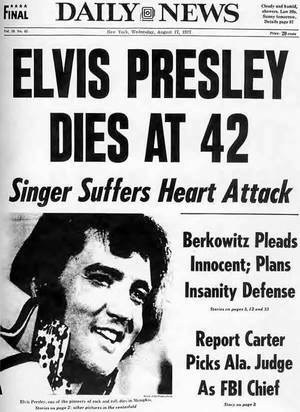 The day Aretha died also marked the 41st anniversary of the passing of Elvis Presley. That event, like the Kennedy Assassination and the day the ’68 Tigers clinched the World Series became a milepost where we stopped to remember where we were and what we were doing. “The King” was just 42 when he left us, but his brand continues to permeate every platform, including identities on both Facebook and Twitter. His estate earned $35 million dollars in 2017 alone. Of the 25 Elvis hits that made their way to the WKNR Music Guide, only “Suspicious Minds” (Video) reached number one.
The day Aretha died also marked the 41st anniversary of the passing of Elvis Presley. That event, like the Kennedy Assassination and the day the ’68 Tigers clinched the World Series became a milepost where we stopped to remember where we were and what we were doing. “The King” was just 42 when he left us, but his brand continues to permeate every platform, including identities on both Facebook and Twitter. His estate earned $35 million dollars in 2017 alone. Of the 25 Elvis hits that made their way to the WKNR Music Guide, only “Suspicious Minds” (Video) reached number one.
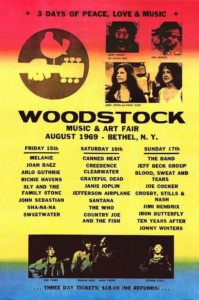 This week is the 49th anniversary of the Woodstock Music and Art Fair, shortened to simply “Woodstock” by the nearly half million music fans who invaded Max Yasgur’s farm in upstate New York. The event and the movie that documented it, amplified a number of musical careers, including Jimi Hendrix, Santana, Joe Cocker, Richie Havens and The Who. In 1969, WKNR-FM was at the height of it’s “Underground” glory, competing with WABX and what was then called WXYZ-FM as the Progressive Rock Genre was born. Here is a rare 90 minute clip of WKNR-FM, recorded on April 27th, 1969.
This week is the 49th anniversary of the Woodstock Music and Art Fair, shortened to simply “Woodstock” by the nearly half million music fans who invaded Max Yasgur’s farm in upstate New York. The event and the movie that documented it, amplified a number of musical careers, including Jimi Hendrix, Santana, Joe Cocker, Richie Havens and The Who. In 1969, WKNR-FM was at the height of it’s “Underground” glory, competing with WABX and what was then called WXYZ-FM as the Progressive Rock Genre was born. Here is a rare 90 minute clip of WKNR-FM, recorded on April 27th, 1969.
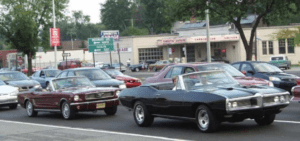 It was Woodward Dream Cruise week in Detroit and the 15th anniversary of Keener’s brief rebirth on the original 1310 AM frequency in August of 2003. Despite a power blackout that blanked much of the east coast, including Detroit, we were on the air with Bob Green, Pat St. John, Michael Stevens, Scott Regen and the other great voices who made radio history in Detroit. Recordings of that historic broadcast are collectors’ items.
It was Woodward Dream Cruise week in Detroit and the 15th anniversary of Keener’s brief rebirth on the original 1310 AM frequency in August of 2003. Despite a power blackout that blanked much of the east coast, including Detroit, we were on the air with Bob Green, Pat St. John, Michael Stevens, Scott Regen and the other great voices who made radio history in Detroit. Recordings of that historic broadcast are collectors’ items.
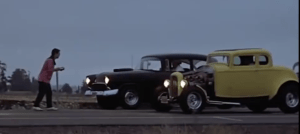 In August of 1973, George Lucas came to our attention as the director of American Graffiti, a film that set him up to create the Star Wars franchise and polished the stardom of it’s ensemble cast: Ron Howard, Richard Dreyfuss, Cindy Williams, Paul LeMat, Charlie Martin Smith, Harrison Ford, Mackenzie Phillips and Candy Clark. It also introduced a new audience to Robert Weston Smith and his broadcasting altar ego, Wolfman Jack.
In August of 1973, George Lucas came to our attention as the director of American Graffiti, a film that set him up to create the Star Wars franchise and polished the stardom of it’s ensemble cast: Ron Howard, Richard Dreyfuss, Cindy Williams, Paul LeMat, Charlie Martin Smith, Harrison Ford, Mackenzie Phillips and Candy Clark. It also introduced a new audience to Robert Weston Smith and his broadcasting altar ego, Wolfman Jack.
Keener #1 hits for the week ending August 18 include:
(1964) House of the Rising Sun, Animals
(1965) You Were On My Mind, We Five
(1966) You Can’t Hurry Love, Supremes
(1967) Society’s Child, Janis Ian
(1968) 1-2-3 Red Light, 1910 Fruit Gum Co
(1969) A Boy Named Sue, Johnny Cash
(1970) Don’t Play That Song, Aretha Franklin
(1971) Spanish Harlem, Aretha Franklin
Our WKNR Music Guide this week comes from the Summer of 1967. It shows Keener at the zenith of its popularity with the Sgt. Pepper’s Lonely Hearts Club Band LP leading the pack and a Top 13 list that celebrated some great Michigan Music from the likes of Bob Seger, The Temptations and The Fantastic Four. Janis Ian‘s “Society’s Child” had just slipped from the top spot. Janis was 16 years old when Society’s Child became a hit. Here’s video of her performing the tune on the Smothers Brothers Comedy Hour.
We’ll leave you with a rare live Aretha Franklin performance, recorded in Amsterdam in 1968. Godspeed, Aretha. Your legacy lives on.
https://www.youtube.com/watch?v=jFN6-O1NHeM
This Week in Keenerland: August 12
 Lots of ground to cover this week in Keenerland!
Lots of ground to cover this week in Keenerland!
It was a big day in Detroit automotive history on Wednesday: the 10 millionth Ford Mustang rolled off the assembly line. There was a parade of Mustangs from every year of production: 1964-2018 from Ford World HQ in Dearborn to the Flat Rock Assembly Plant (where Mustangs are assembled) It’s been the best selling sports car in America over the past 50 years. The Mustang was first revealed to the public on April 17, 1964, at the New York World’s Fair.
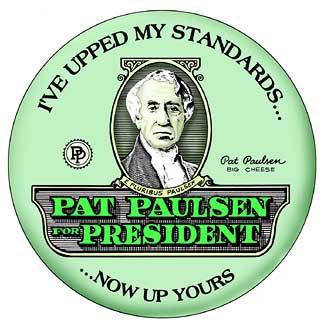 With the highest primary turnout in Michigan history, we celebrated by remembering Pat Paulesn‘s 1968 presidential run. Paulsen gained fame on the CBS-TV “Smothers Brothers Comedy Hour”. His presidential run became a perennial event during his prime. Here’s a link to several of Pat’s Smothers Brothers “Editorials”, which lead Tom and Dick to suggest the notion of running for Commander in Chief. According to Wikipedia, “Paulsen’s name appeared on the ballot in New Hampshire for the Democratic primary several times. In 1996, he received 921 votes (1%) to finish second to President Bill Clinton (76,754 votes); this was actually ahead of real politicians such as Buffalo mayor James D. Griffin. In 1992, he came in second to George Bush in the North Dakota Republican Primary. In the 1992 Republican Party primaries, he received 10,984 votes total.”
With the highest primary turnout in Michigan history, we celebrated by remembering Pat Paulesn‘s 1968 presidential run. Paulsen gained fame on the CBS-TV “Smothers Brothers Comedy Hour”. His presidential run became a perennial event during his prime. Here’s a link to several of Pat’s Smothers Brothers “Editorials”, which lead Tom and Dick to suggest the notion of running for Commander in Chief. According to Wikipedia, “Paulsen’s name appeared on the ballot in New Hampshire for the Democratic primary several times. In 1996, he received 921 votes (1%) to finish second to President Bill Clinton (76,754 votes); this was actually ahead of real politicians such as Buffalo mayor James D. Griffin. In 1992, he came in second to George Bush in the North Dakota Republican Primary. In the 1992 Republican Party primaries, he received 10,984 votes total.”
48 years ago this week, The Goose Lake International Music Festival was held near Jackson. While Woodstock got the movie and the forever fame, Goose Lake wasn’t far behind. Construction company owner Richard Songer teamed up with WKNR-FM’s Russ Gibb to put on the show. And what a show it was. Over 200,000 people were on hand to hear performances by The Faces featuring Rod Stewart, Jethro Tull, Chicago, Ten Years After, The Flying Burrito Brothers, Mountain, John Sebastian, the James Gang featuring Joe Walsh, The Flock and The Litter. Local heroes on the revolving stage included: Bob Seger, the MC5, The Stooges, Detroit featuring Mitch Ryder, Brownsville Station, Savage Grace, Third Power and SRC. Masters of ceremonies were Teegarden & Van Winkle, who also performed. After over 150 drug arrests were made, Michigan attorney general Frank J. Kelley said, “I think we have seen the first and last rock concert of that size in Michigan”. And he was right. And speaking of John Sebastian, here’s a NYT Tale about how The Lovin’ Spoonful‘s “Summer in the City” became the sound track for every city’s summer.
 Turtle Trivia: On August 7, 1965, The Turtles released what would become their first hit record, the Bob Dylan penned, “It Ain’t Me Babe” (Video). The former “Crossfires” would hit 11 times on Keener, their biggest being 1967’s “Happy Together” (Video). Mark Volman and Howard Kaylan would continue to perform in many incarnations, as members of Frank Zappa‘s band and as the duo “Flo and Eddie”.
Turtle Trivia: On August 7, 1965, The Turtles released what would become their first hit record, the Bob Dylan penned, “It Ain’t Me Babe” (Video). The former “Crossfires” would hit 11 times on Keener, their biggest being 1967’s “Happy Together” (Video). Mark Volman and Howard Kaylan would continue to perform in many incarnations, as members of Frank Zappa‘s band and as the duo “Flo and Eddie”.
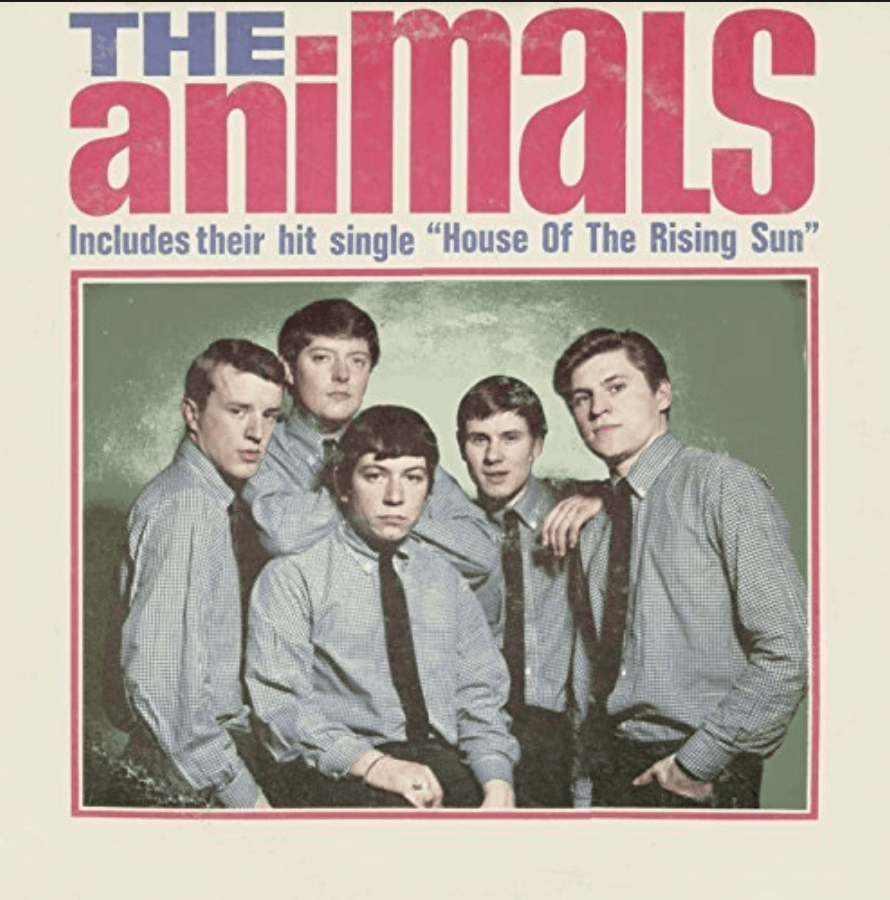 This week in 1964, The Animals released “House of the Rising Sun” (Video). Legend has it that they recorded the tune in just one take, in less than 10 minutes. Clocking in at 4:29, the record was deemed a little too long for Keener’s tight formatics, so Paul Cannon made a special 2:58 edit that MGM records latched onto. It became the most ubiquitous version played on Top 40 stations across the country.
This week in 1964, The Animals released “House of the Rising Sun” (Video). Legend has it that they recorded the tune in just one take, in less than 10 minutes. Clocking in at 4:29, the record was deemed a little too long for Keener’s tight formatics, so Paul Cannon made a special 2:58 edit that MGM records latched onto. It became the most ubiquitous version played on Top 40 stations across the country.
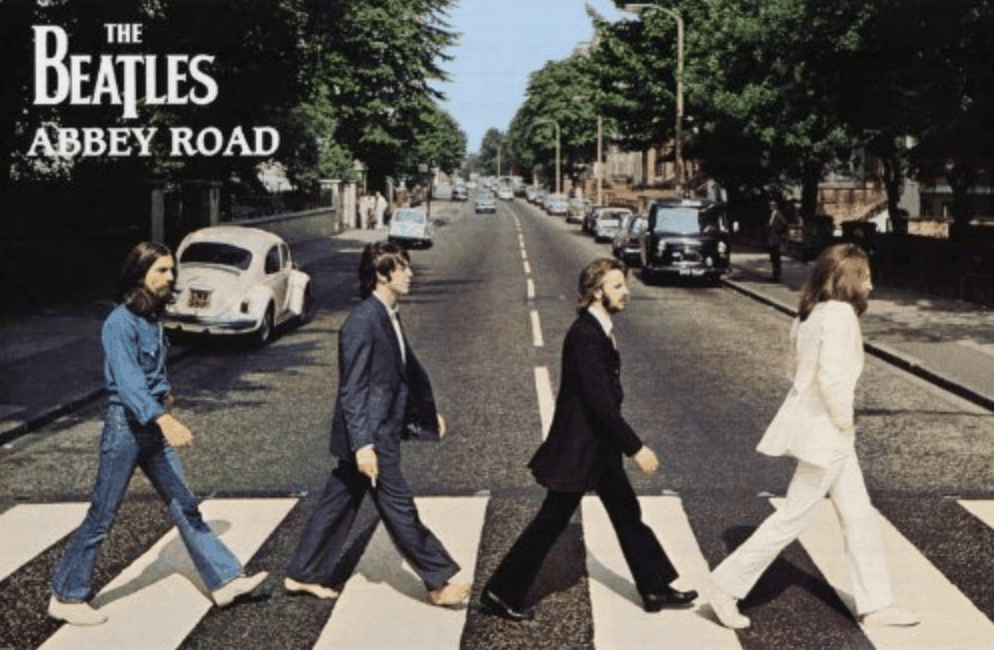 This was also the week when the iconic Abbey Road album cover was shot by photographer Iain MacMillan. “Paul Is Dead” conspiracy theorists believe that his barefoot stride was an indicator that he was, in fact, a corpse. Other iterations of the 6 photos MacMillian took while balanced on a step ladder show Paul in flip-flops. McCartney, who ultimately selected the iconic cover photo, later claimed that he went barefoot because it was simply a hot day. Although “Let It Be” was released later, “Abbey Road” was the final Beatles studio collaboration. BTW, The most well researched book on the Paul Is Dead phoenominon is “Turn Me On, Dead Man: The Beatles and the Paul McCartney Death Hoax“, written by Andru Reeve. It’s great reading for any Keenerfan.
This was also the week when the iconic Abbey Road album cover was shot by photographer Iain MacMillan. “Paul Is Dead” conspiracy theorists believe that his barefoot stride was an indicator that he was, in fact, a corpse. Other iterations of the 6 photos MacMillian took while balanced on a step ladder show Paul in flip-flops. McCartney, who ultimately selected the iconic cover photo, later claimed that he went barefoot because it was simply a hot day. Although “Let It Be” was released later, “Abbey Road” was the final Beatles studio collaboration. BTW, The most well researched book on the Paul Is Dead phoenominon is “Turn Me On, Dead Man: The Beatles and the Paul McCartney Death Hoax“, written by Andru Reeve. It’s great reading for any Keenerfan.
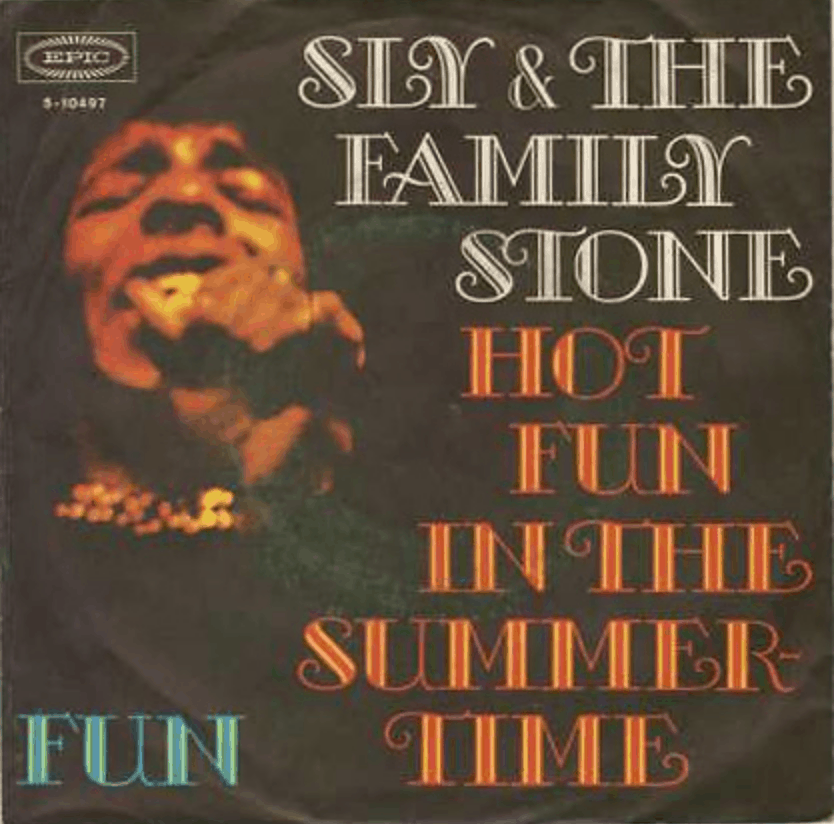 In 1969, Sly and the Family Stone released “Hot Fun in the Summertime” (Video), one of 10 WKNR chart appearances for the former San Francisco disc Jockey and Denton, Texas native, Sylvester Stewart and his band. It was released in the wake of their appearance at Woodstock, an event that greatly expanded their fanbase. It’s also one of three hit singles that were never released on an LP, until Sly’s Greatest Hits collection came out in 1970.
In 1969, Sly and the Family Stone released “Hot Fun in the Summertime” (Video), one of 10 WKNR chart appearances for the former San Francisco disc Jockey and Denton, Texas native, Sylvester Stewart and his band. It was released in the wake of their appearance at Woodstock, an event that greatly expanded their fanbase. It’s also one of three hit singles that were never released on an LP, until Sly’s Greatest Hits collection came out in 1970.
The Keener Question of the Week: What album had the biggest impact on you as a teenager? Here is what a number of Keener Facebook Fans told us.
Did you know.. that this week in 1957 American Bandstand debuted on ABC-TV with Dick Clark as the host? Clark had been doing the show at WFIL Philadelphia, where it had been a mainstay since Bob Horn originated it in 1954. Clark’s first ABC guest: Buddy Holly. In a 1965 concert this week in Chicago, Mike Smith, lead singer of the Dave Clark Five, had two ribs broken when he was pulled off the stage by overzealous fans. Meanwhile, at the Columbia Recording Studio in Nashville, Roger Miller jumped on the British Invasion bandwagon, recording “England Swings.” From the “who discovered who” department, this week in 1969, Diana Ross hosted a party At the Beverly Hills Daisy Club for 350 special guests to announce “her discovery,” a singing group called the Jackson 5. It was actually the mercurial Bobby Taylor who discovered them and Gladys Knight who recommended them to Motown label boss Berry Gordy, Jr. Taylor passed away last year at age 83.
Keener birthdays this week include:
August 7 B.J. Thomas – 75
August 8 Connie Stevens – 79
August 9 Barbara Mason – 70
August 10 Ian Anderson – 70
August 11 Eric Carmen – 68
August 12 Buck Owens would have been 88. He passed away at age 76 in March of 2006.
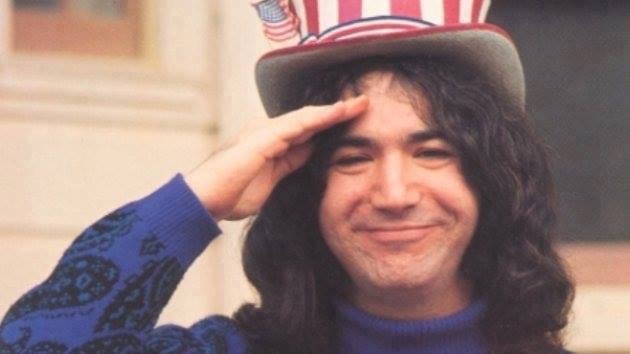 Hard to believe it’s been 13 years since Jerry Garcia left us. Like too many of the great musical talents of the Keener age, Jerry struggled with addiction and health problems. And yet, he was a central personality in the founding and the 3 decade career of the prolific and continually touring Grateful Dead. While the Dead never charted on WKNR-AM, they were prominently featured on Keener FM.
Hard to believe it’s been 13 years since Jerry Garcia left us. Like too many of the great musical talents of the Keener age, Jerry struggled with addiction and health problems. And yet, he was a central personality in the founding and the 3 decade career of the prolific and continually touring Grateful Dead. While the Dead never charted on WKNR-AM, they were prominently featured on Keener FM.
Keener #1 hits for the week ending August 12 include:
(1964) Bread & Butter, New Beats
(1965) You Were On My Mind, We Five
(1966) See You in September, Happenings
(1967) Society’s Child, Janis Ian
(1968) People Got To Be Free, Rascals
(1969) A Boy Named Sue, Johnny Cash
(1970) In The Summertime, Mungo Jerry
(1971) How Can You Mend a Broken Heart, Bee Gees
This week’s deep dive into the WKNR Music Guide comes from the week of August 14, 1969. Johnny Cash was at number 1 with Shel Silverstein‘s, “A Boy Named Sue” (Video). We’re pretty sure that Keener bleeped the SOB line near the end. Ed Busch came to WKNR from CKLW and worked at W4 after his Keener service. Here’s a Freep story about his time across the river, courtesy of our good friends at Motor City Radio Flashbacks. Columnist Loraine Alterman is the “Loraine” you see Frankie Valli talking with in Jersey Boys. She went on to marry Young Frankenstein actor Peter Boyle. That Oakland Mall concert featuring Bob Seger, Savage Grace, The Third Power and The Sky ended up drawing north of 20,000 attendees.
Dave Mason posted this New Yorker comic on his Facebook Page. So many from our generation can relate to both the story and the way we’re telling it these days…
And finally, in celebration of last week’s National Oyster Day, we featured this classic Curly Howard video on the Keener FB page. Brings back memories of watching the boys on Channel 7 with Johnny Ginger!
This week in Keenerland: August 5
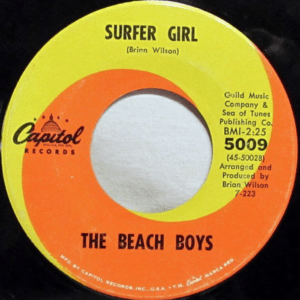 Surfer Girl turns 55. On August 3, 1963, Brian Wilson got his first producer credit as this Capitol Records release cracked the Billboard Hot 100. It stayed on the charts for 56 weeks, peaking at number 7. Keener’s debut was still a little over two months away when this quintessential summer song was released but The Beach Boys would become Motor City Favorites, charting 21 times on the WKNR Music Guide, making them the 7th most popular artists in the Keener era. Here’s a link to a live “Surfer Girl” performance from 1964. You get a great sense for the power of the boys’ harmonies and their ability to recreate the Wrecking Crew’s studio work on stage.
Surfer Girl turns 55. On August 3, 1963, Brian Wilson got his first producer credit as this Capitol Records release cracked the Billboard Hot 100. It stayed on the charts for 56 weeks, peaking at number 7. Keener’s debut was still a little over two months away when this quintessential summer song was released but The Beach Boys would become Motor City Favorites, charting 21 times on the WKNR Music Guide, making them the 7th most popular artists in the Keener era. Here’s a link to a live “Surfer Girl” performance from 1964. You get a great sense for the power of the boys’ harmonies and their ability to recreate the Wrecking Crew’s studio work on stage.
 It’s been 26 years since a Detroit Tiger entered the baseball hall of fame. That error was rectified as Alan Trammell and Jack Morris were inducted at Cooperstown. The last tiger to enter the hall was Hal “Prince” Newhouser. Sparky Anderson made it back in 2000. But although his longest big league gig was in Detroit, his induction was associated with his leadership of the Cincinnati Reds. Even though, most of us Keenerfans identify with the ’68 tigers, Trammell and Morris brought the pennant home to Detroit as members of the 1984 World Championship team.
It’s been 26 years since a Detroit Tiger entered the baseball hall of fame. That error was rectified as Alan Trammell and Jack Morris were inducted at Cooperstown. The last tiger to enter the hall was Hal “Prince” Newhouser. Sparky Anderson made it back in 2000. But although his longest big league gig was in Detroit, his induction was associated with his leadership of the Cincinnati Reds. Even though, most of us Keenerfans identify with the ’68 tigers, Trammell and Morris brought the pennant home to Detroit as members of the 1984 World Championship team.
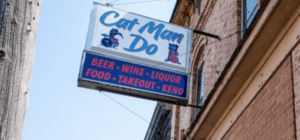 From the Bob Seger trivia department, there is now a bar honoring one of Seger’s biggest hits. According to MLive, Cat Man Do celebrated a grand opening in Unionville on July 27. Owner Dennis Collon first encountered Seger when he and “The Last Heard” played the American Legion Hall in Unionville in 1967. The Cat Man Do menu includes a “Silver Bullet” burger, “Katmandu” burger and “Bob Seger” grilled ham and cheese.
From the Bob Seger trivia department, there is now a bar honoring one of Seger’s biggest hits. According to MLive, Cat Man Do celebrated a grand opening in Unionville on July 27. Owner Dennis Collon first encountered Seger when he and “The Last Heard” played the American Legion Hall in Unionville in 1967. The Cat Man Do menu includes a “Silver Bullet” burger, “Katmandu” burger and “Bob Seger” grilled ham and cheese.
 Monkee fans got a scare when Mike Nesmith collapsed during a sound check at a recent concert at the Keswick Theatre in Glenside, PA. When doctors took a look they recommended quadruple bypass surgery, leading to cancellation of the last 4 dates of “The Mike and Mickey Show”. Nesmith told Rolling Stone Magazine, “I think, candidly, I’m back to 80 percent.. I’m seeing the light at the end of the tunnel. It all feels like a natural healing process.” Monkee Davy Jones died of a heart attack in February of 2012.
Monkee fans got a scare when Mike Nesmith collapsed during a sound check at a recent concert at the Keswick Theatre in Glenside, PA. When doctors took a look they recommended quadruple bypass surgery, leading to cancellation of the last 4 dates of “The Mike and Mickey Show”. Nesmith told Rolling Stone Magazine, “I think, candidly, I’m back to 80 percent.. I’m seeing the light at the end of the tunnel. It all feels like a natural healing process.” Monkee Davy Jones died of a heart attack in February of 2012.
 Paul McCartney returned to “where it all began” with a surprise concert at the Cavern Club. It’s a departure from Paul’s usual venues, stadiums holding 180,000 plus; The Cavern Club’s fire capacity is just 350 people. NBC remembered that the Beatles played at the Cavern, before finding fame, in 1961. The original club closed 12 years later and was eventually demolished. Some entrepreneurial soul saved bricks, which were used to build a new venue on the same spot. For those keeping score, The Fab Four had the most chart appearances on Keener, 47 during WKNR’s lifetime. McCartney himself did pretty well, too. He hit on the WKNR Music Guide 7 times as a solo act.
Paul McCartney returned to “where it all began” with a surprise concert at the Cavern Club. It’s a departure from Paul’s usual venues, stadiums holding 180,000 plus; The Cavern Club’s fire capacity is just 350 people. NBC remembered that the Beatles played at the Cavern, before finding fame, in 1961. The original club closed 12 years later and was eventually demolished. Some entrepreneurial soul saved bricks, which were used to build a new venue on the same spot. For those keeping score, The Fab Four had the most chart appearances on Keener, 47 during WKNR’s lifetime. McCartney himself did pretty well, too. He hit on the WKNR Music Guide 7 times as a solo act.
Keener #1s for the week ending August 4th include:
(1964) Bread & Butter, New Beats
(1965) I Got You Babe, Sonny & Cher
(1966) See You in September, Happenings
(1967) Society’s Child, Janis Ian
(1968) People Got To Be Free, Rascals
(1969) A Boy Named Sue, Johnny Cash
(1970) Close to You, Carpenters
(1971) How Can You Mend a Broken Heart, Bee Gees
And this week’s deep dive into the WKNR Music Guide comes from the week of August 4, 1965. Remember the Keener Lucky License Number contest? Extra credit if you also remembered the brand of gasoline that sponsored it. The Sinclair Oil Corporation was gobbled up by Atlantic Richfield in 1969.
And finally, from a Bob Hope special, two years before NBC became “The Full Color Network”, here are The We Five singing their one hit wonder, “You Were On My Mind”. It was at #2 this week in 1965.
https://www.youtube.com/watch?v=W-7QHWJOzbE
This week in Keenerland: July 22
From our ongoing list of things that turn 50 this year:
 Happy 50th birthday, “Yellow Submarine“. The groundbreaking Beatle film of the same name premiered on July 17, 1968. This piece from Rolling Stone reminds us that, “The adventures of John, Paul, George and Ringo stands as a pop-art animated masterpiece – and a new rerelease reminds us of why it still feels ahead of its time.”
Happy 50th birthday, “Yellow Submarine“. The groundbreaking Beatle film of the same name premiered on July 17, 1968. This piece from Rolling Stone reminds us that, “The adventures of John, Paul, George and Ringo stands as a pop-art animated masterpiece – and a new rerelease reminds us of why it still feels ahead of its time.”
The anniversary was celebrated with a limited theatrical re-release of the film, a project that the Beatles were initially less then enthused about doing. They owed one more picture to United Artists but didn’t want a reprise of “Help”. Ever the problem solver, manager Brian Epstein suggested a feature length cartoon. Inspired by listening to the yet to be released “Sgt. Pepper’s Lonely Hearts Club Band” LP, the creative team of animators and writers, including future “Love Story” penman Erich Segal, found their muse.
As Rolling Stone’s David Fear puts it, “It doesn’t matter whether it’s been decades or merely days since you’ve seen it last. It’s still a hell of a lot weirder than you remember it being.”
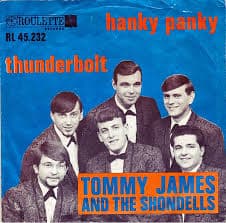 52 years ago this month Niles, Michigan’s Tommy James earned his first national number one with “Hanky Panky“. Originally written by written by Jeff Barry and Ellie Greenwich for their group, The Raindrops, The Shondells cover, recorded two years later launched Tommy’s star. But it didn’t happen overnight. Recorded at radio station WNIL and released on a regional label, Hanky Panky had a brief, regional prime, before Pittsburgh DJ, “Mad Mike” Metrovich, resurrected it a year later to growing acclaim. The then unemployed Tommy James took the single to New York, pitching it to Roulette Records. With the label’s national clout, Hanky Panky was on it’s way to the top of the charts.
52 years ago this month Niles, Michigan’s Tommy James earned his first national number one with “Hanky Panky“. Originally written by written by Jeff Barry and Ellie Greenwich for their group, The Raindrops, The Shondells cover, recorded two years later launched Tommy’s star. But it didn’t happen overnight. Recorded at radio station WNIL and released on a regional label, Hanky Panky had a brief, regional prime, before Pittsburgh DJ, “Mad Mike” Metrovich, resurrected it a year later to growing acclaim. The then unemployed Tommy James took the single to New York, pitching it to Roulette Records. With the label’s national clout, Hanky Panky was on it’s way to the top of the charts.
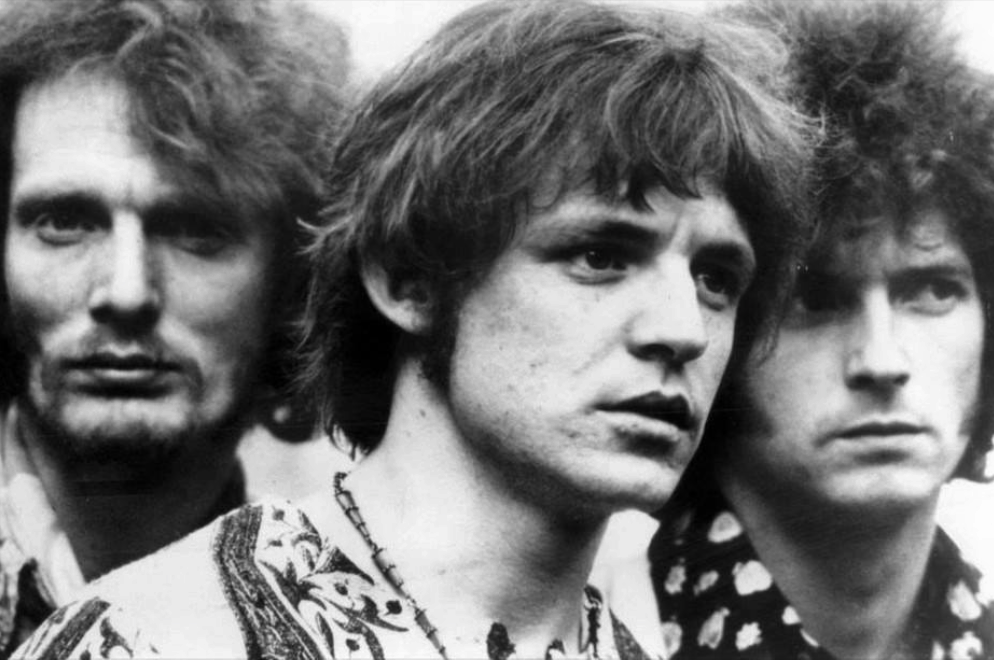 The term “Supergroup” was coined that same month in 1966, when Eric Clapton, Jack Bruce and Ginger Baker teamed up to form Cream. Their two biggest Keener hits were “Sunshine of Your Love” and “White Room“. And they hold the distinction of being the first band to earn a platinum selling double-album, “Wheels of Fire“. Cream’s star burned brightly and briefly. They dissolved in the spring of 1968, with each individual going on to further success, Baker and Clapton collaborating to form Blind Faith along with Steve Winwood and Rick Grech, Clapton adding magic to Delaney & Bonnie and Friends and Derek and the Dominoes, and Bruce enjoying a fruitful solo career.
The term “Supergroup” was coined that same month in 1966, when Eric Clapton, Jack Bruce and Ginger Baker teamed up to form Cream. Their two biggest Keener hits were “Sunshine of Your Love” and “White Room“. And they hold the distinction of being the first band to earn a platinum selling double-album, “Wheels of Fire“. Cream’s star burned brightly and briefly. They dissolved in the spring of 1968, with each individual going on to further success, Baker and Clapton collaborating to form Blind Faith along with Steve Winwood and Rick Grech, Clapton adding magic to Delaney & Bonnie and Friends and Derek and the Dominoes, and Bruce enjoying a fruitful solo career.
 Want your own replica of the original TV Batmobile? Mark Racop and his company, Fiberglass Freaks, can make you one. The ode to the George Barris design starts at $99K with tricked out versions topping out at a quarter million. Barris’ original was built on a one-off Ford Lincoln Futura chassis with Ford Galaxie parts contributing to two replicas, built for show and one for the drag racing circuit. As Wikipedia notes, Tim Burton‘s live-action films Batman (1989) and Batman Returns (1992) presented a different version of the Batmobile, which reflected those films’ Art Deco version of Gotham City, both of which were designed by Anton Furst. It was long, low and sleek, and was built on a Chevrolet Impala chassis. We’re partial to the original.
Want your own replica of the original TV Batmobile? Mark Racop and his company, Fiberglass Freaks, can make you one. The ode to the George Barris design starts at $99K with tricked out versions topping out at a quarter million. Barris’ original was built on a one-off Ford Lincoln Futura chassis with Ford Galaxie parts contributing to two replicas, built for show and one for the drag racing circuit. As Wikipedia notes, Tim Burton‘s live-action films Batman (1989) and Batman Returns (1992) presented a different version of the Batmobile, which reflected those films’ Art Deco version of Gotham City, both of which were designed by Anton Furst. It was long, low and sleek, and was built on a Chevrolet Impala chassis. We’re partial to the original.
Keener #1s for the week ending June 22 include:
(1964) Where Did Our Love Go, Supremes
(1965) Nobody Knows What’s Going On, Chiffons
(1966) The Pied Piper, Crispian St. Peters
(1967) I Wanna Testify, Parliaments
(1968) Classical Gas, Mason Williams
(1969) In The Year 2525, Zager & Evans
(1970) Close to You, Carpenters
(1971) Smiling Faces Sometimes, Undisputed Truth
And this week’s deep dive into the WKNR Music Guide comes from the week of July 22, 1970, featuring radio legend Pat St. John on the cover. How many of these Keener hits do you remember?
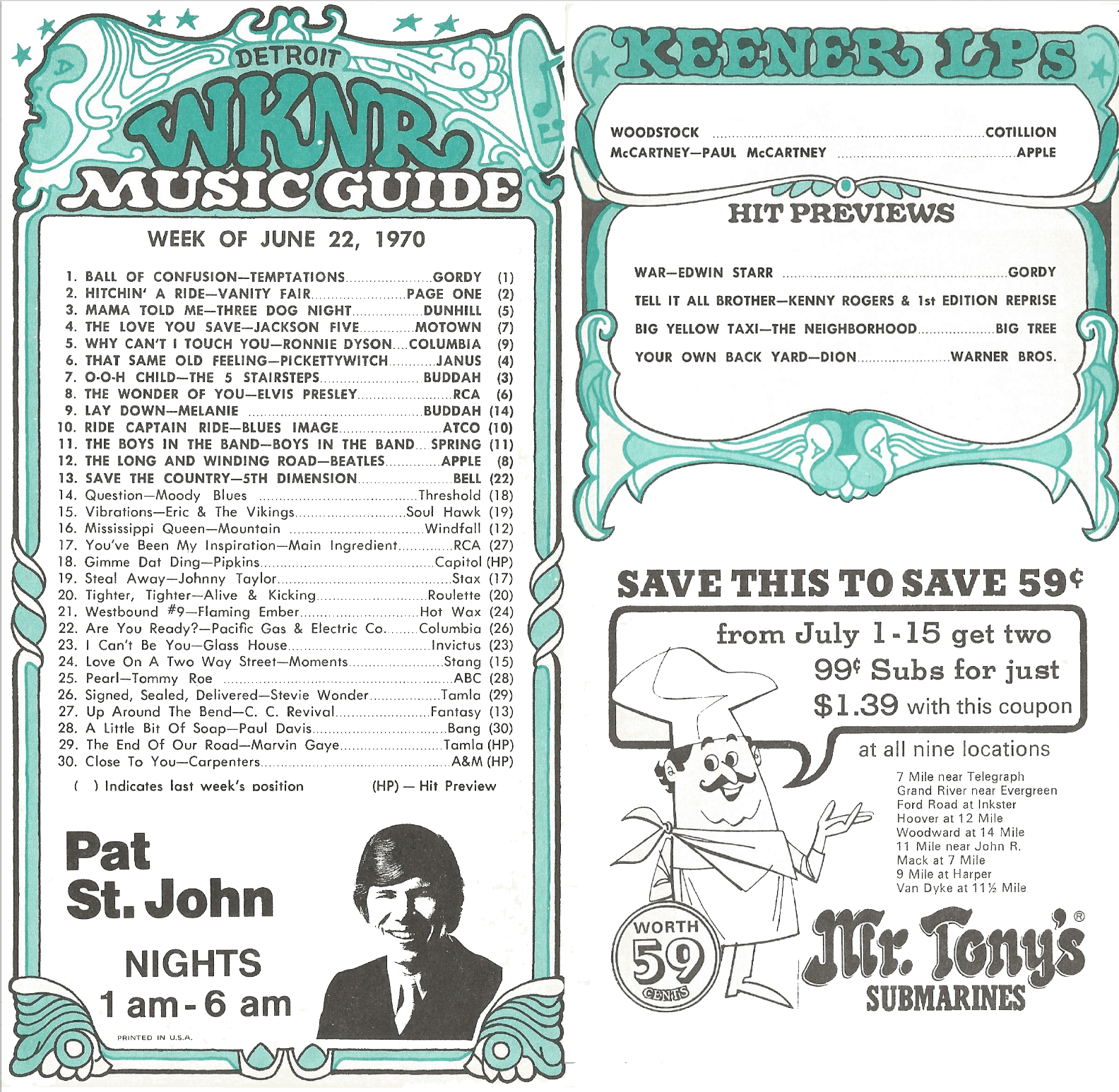
And finally, here’s a “live” rendition of this week’s number one from 1970. The Temps performing “Ball of Confusion”.
This Week In Keenerland: July 8th
Lots of activity on the Keener Facebook Page this week. Editor, Jeff Smith, did his usual job of finding fascinating and fun Keenerania for us fans.
 The Michigan Central Depot was the centerpiece for a Documentary which ran on July 1 on the History Channel. Ford’s purchase of the iconic structure and their intention to revitalize Corktown as a 1.2-million-square-foot campus for 2,500 employees has drawn praise from every corner of Keenerland. Narrated by actor and Detroit native J.K. Simmons, the program, “pulled no punches, and emphasized the boom and bust of this city,” Gregory Sumner, professor and chair of the history department at the University of Detroit Mercy told the Detroit News. The Depot is one of 12 Detroit renovations currently under way, according to Curbed Detroit.
The Michigan Central Depot was the centerpiece for a Documentary which ran on July 1 on the History Channel. Ford’s purchase of the iconic structure and their intention to revitalize Corktown as a 1.2-million-square-foot campus for 2,500 employees has drawn praise from every corner of Keenerland. Narrated by actor and Detroit native J.K. Simmons, the program, “pulled no punches, and emphasized the boom and bust of this city,” Gregory Sumner, professor and chair of the history department at the University of Detroit Mercy told the Detroit News. The Depot is one of 12 Detroit renovations currently under way, according to Curbed Detroit.
The Question of the week was “Without saying your age, what is something from your childhood that a younger person wouldn’t understand?” Here are a few answers Keenerfans shared: Jarts, party lines, Twin Pines “worry free home delivery” and just 5 television channels (including Channel 9 from Windsor) were among the contributions.
 Keenerfan Gary Plopan instantly got the reference we alluded to in this picture, posted on July 3. It’s a tip of the hat to Roger Miller’s Keener Hit, “King of the Road”. It peaked at number 9 on the WKNR Music Guide the week of February 25th, 1965. Roger charted on Keener with other hits, too, including, Engine #9 and Dang Me. Extra credit if you remember the tune that was number one that week: “Red Roses for a Blue Lady”. Keener played versions by both Vic Dana and bandleader Bert Kaempfert.
Keenerfan Gary Plopan instantly got the reference we alluded to in this picture, posted on July 3. It’s a tip of the hat to Roger Miller’s Keener Hit, “King of the Road”. It peaked at number 9 on the WKNR Music Guide the week of February 25th, 1965. Roger charted on Keener with other hits, too, including, Engine #9 and Dang Me. Extra credit if you remember the tune that was number one that week: “Red Roses for a Blue Lady”. Keener played versions by both Vic Dana and bandleader Bert Kaempfert.
 Before her Academy Award performances in films like Norma Rae, we remember Sally Field as “The Flying Nun” and “Gidget”. We celebrated July 4th with several photos including this one from Sally’s Gidget incarnation. Wikipedia tells us that the original Gidget was created by Frederick Kohner in a 1957 novel that lead to a number of sequels. There were three films inspired by the character: Gidget (1959), starring Sandra Dee, Gidget Goes Hawaiian (1961), starring Deborah Walley and Gidget Goes to Rome (1963), starring Cindy Carol. Sally Field took over the role when Gidget came briefly to Channel 7 on ABC. The show ran from September 15, 1965 until April 21, 1966 when low ratings and an impatient network lead to its demise. ABC would swing the bat one more time, with Karen Valentine in the lead in the telemovie, Gidget Grows Up, in 1969.
Before her Academy Award performances in films like Norma Rae, we remember Sally Field as “The Flying Nun” and “Gidget”. We celebrated July 4th with several photos including this one from Sally’s Gidget incarnation. Wikipedia tells us that the original Gidget was created by Frederick Kohner in a 1957 novel that lead to a number of sequels. There were three films inspired by the character: Gidget (1959), starring Sandra Dee, Gidget Goes Hawaiian (1961), starring Deborah Walley and Gidget Goes to Rome (1963), starring Cindy Carol. Sally Field took over the role when Gidget came briefly to Channel 7 on ABC. The show ran from September 15, 1965 until April 21, 1966 when low ratings and an impatient network lead to its demise. ABC would swing the bat one more time, with Karen Valentine in the lead in the telemovie, Gidget Grows Up, in 1969.
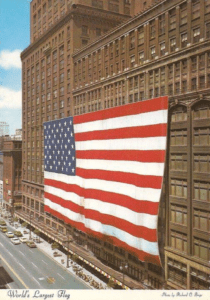 And then, there is this photograph of the World’s Largest American Flag, that flew for many years across the façade at Hudson’s. Over 60,000 of you saw this iconic image on the Keener Facebook Page. According to the Detroit Historical Society. “Hudson’s will always be remembered for owning the world’s largest flag, which was draped across the building’s Woodward façade on Armistice Day and other patriotic holidays. The flag was first hung on Armistice Day in 1923 and was later shown off at the World’s Fair in 1939. At 3,700 square feet, the stars were a half-foot tall, and one mile of rope was needed to hang it. The original flag was last displayed in 1949, to be replaced a year later with a new seven-story flag that required 55 men to hang it. After being hung for the final time in 1976, the flag was donated to the Smithsonian Institution.” Even today, there is some dispute about the flag’s size. Keenerfan, Mary Braun, remembered, “My grandmother was five feet tall and I grew up looking at pictures of her friend, just slightly shorter who could fit in the star completely. At an elegant five foot even, my grandmother could not fit completely. So she said.”
And then, there is this photograph of the World’s Largest American Flag, that flew for many years across the façade at Hudson’s. Over 60,000 of you saw this iconic image on the Keener Facebook Page. According to the Detroit Historical Society. “Hudson’s will always be remembered for owning the world’s largest flag, which was draped across the building’s Woodward façade on Armistice Day and other patriotic holidays. The flag was first hung on Armistice Day in 1923 and was later shown off at the World’s Fair in 1939. At 3,700 square feet, the stars were a half-foot tall, and one mile of rope was needed to hang it. The original flag was last displayed in 1949, to be replaced a year later with a new seven-story flag that required 55 men to hang it. After being hung for the final time in 1976, the flag was donated to the Smithsonian Institution.” Even today, there is some dispute about the flag’s size. Keenerfan, Mary Braun, remembered, “My grandmother was five feet tall and I grew up looking at pictures of her friend, just slightly shorter who could fit in the star completely. At an elegant five foot even, my grandmother could not fit completely. So she said.”
 A lasting piece of Detroit nostalgia went up in flames, when The Boblo Boat, SS Ste. Claire, caught fire on the Detroit River. Early investigations point to welding activities as a possible spark for the fire. The Ste. Claire and the Columbia together are the last classic excursion boats in the nation, Maritime Historian, Bill Worden, told the Detroit News. “They’re really the last of their type.” How many of us rode the boats to BobLo Island in it’s heyday?
A lasting piece of Detroit nostalgia went up in flames, when The Boblo Boat, SS Ste. Claire, caught fire on the Detroit River. Early investigations point to welding activities as a possible spark for the fire. The Ste. Claire and the Columbia together are the last classic excursion boats in the nation, Maritime Historian, Bill Worden, told the Detroit News. “They’re really the last of their type.” How many of us rode the boats to BobLo Island in it’s heyday?
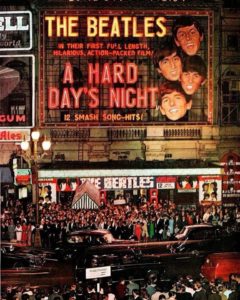 On July 6th, 1964, The Beatles’ film “Hard Day’s Night” opened to positive reviews and great box office. Time magazine rated it as one of the all-time great 100 films, according to Wikipedia. British critic Leslie Halliwell described it as a “comic fantasia with music; an enormous commercial success with the director trying every cinematic gag in the book” and awarded it a full four stars. The film is credited as being one of the most influential of all musical films, inspiring numerous spy films, the Monkees’ television show and pop music videos. The film earned $11 million (over $880 million in todays dollars) on top of a budget of $200,000. A Hard Day’s Night was nominated for two Academy Awards: for Best Screenplay (Alun Owen), and Best Score (Adaptation) (George Martin). The film was a huge hit in Detroit, playing for weeks at Motor City “neighborhood and drive-in theaters”. Judy Phillips Spriggs spoke for many of us when she wrote that she, “Saw it numerous times at the Mai Kai theater in Livonia!”
On July 6th, 1964, The Beatles’ film “Hard Day’s Night” opened to positive reviews and great box office. Time magazine rated it as one of the all-time great 100 films, according to Wikipedia. British critic Leslie Halliwell described it as a “comic fantasia with music; an enormous commercial success with the director trying every cinematic gag in the book” and awarded it a full four stars. The film is credited as being one of the most influential of all musical films, inspiring numerous spy films, the Monkees’ television show and pop music videos. The film earned $11 million (over $880 million in todays dollars) on top of a budget of $200,000. A Hard Day’s Night was nominated for two Academy Awards: for Best Screenplay (Alun Owen), and Best Score (Adaptation) (George Martin). The film was a huge hit in Detroit, playing for weeks at Motor City “neighborhood and drive-in theaters”. Judy Phillips Spriggs spoke for many of us when she wrote that she, “Saw it numerous times at the Mai Kai theater in Livonia!”
Speaking of the Beatles, Ringo Starr turned 78 on July 7th. We share this video featuring some of the drummer’s he’s influenced during his career. Born Richard Starkey, Ringo still tours today with his all star band. He’s single handedly responsible for the explosive popularity of Ludwig Drums after percussionists everywhere saw the logo on the front of his kit.
Keener #1s for the week ending June 8th over the years:
(1964) Rag Doll, Four Seasons
(1965) Satisfaction, Rolling Stones
(1966) Wild Thing, Troggs
(1967) Light My Fire, Doors
(1968) Journey to the Center of the Mind, Amboy Dukes
(1969) In The Year 2525, Zager & Evans
(1970) Signed Sealed Delivered, Stevie Wonder
(1971) Smiling Faces Sometimes, Undisputed Truth
And this week’s deep dive into the WKNR Music Guide comes from the week of July 7, 1965. How many of these Keener hits do you remember?
Debuting that week was Lesley Gore’s last big hit, “Sunshine, Lollypops and Rainbows”. Legend has it that a relative of songwriter Marvin Hamlisch was Quincy Jones’ dentist and the doc pitched Marvin’s work while the legendary producer was in the dental chair. The tune was part of the teen film Ski Party. We leave you with Lesley singing the tune in a clip from the film. Look for Dobie Gillis star Dwayne Hickman and teen heartthrob actress Deborah Walley in the shot.
Frank Maruca – The Man Behind the Magic
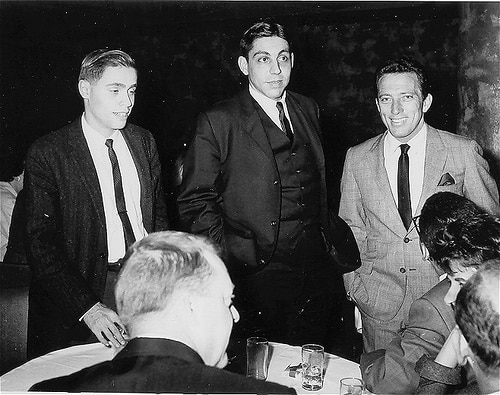
Occasionally at Keener13.com, we talk about the ingredients behind the scenes that so mixed to make WKNR central to the soundtrack of our lives. Today we introduce you to a name that is central to the Keener legend, a name that few listeners may have heard who was crucial to the creation and and success of the station we grew up with.
If there was ever a “Man Behind the Curtain” at WKNR, it was long time Program Director, Frank Maruca. He was the creative brain behind Keener’s transformation and the sales promotion that helped drive revenue. It’s amazing how many of the ideas he espoused are still relevant today. Here are a few:
It isn’t just “Radio”, it’s a sales and marketing machine – Maruca’s background included a stint as sales and marketing director at KYW. The call letters, familiar to many as those of the all-news giant in Philadelphia, were then assigned to a station in Cleveland, Ohio. His broad view of how programming and promotions could serve as a catalyst for client revenue generation helped create a win-win environment for listeners and advertisers that generated legendary ratings and phenomenal cash flow.
Russ White interviewed Maruca for our forthcoming book “Motor City Music – Keener 13 and the Soundtrack of Detroit”. Here are a few nuggets from that conversation
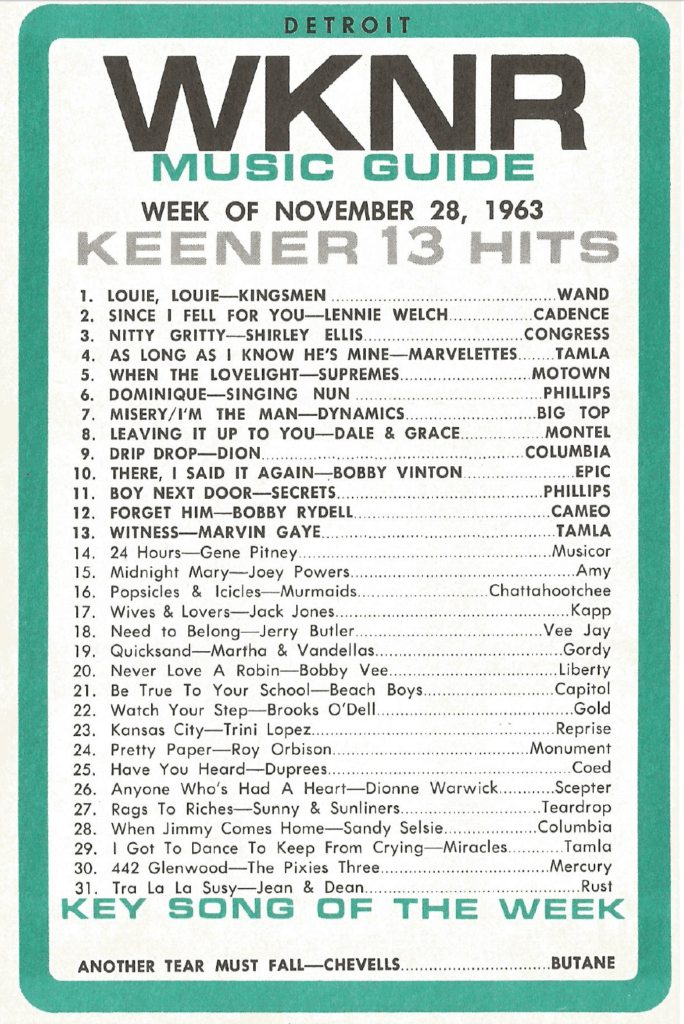 Begin with research but don’t be afraid to take risks – Maruca said that the Keener team did a lot of market research as the format was being crafted. Motown Records was in its infancy and the demand for R&B was obvious. Many in the ownership group fought the notion, but WKNR’s majority shareholder, the visionary Nellie Knorr, bought in. Keeners first playlists had a distinctive R&B feel. Marvin Gaye, Shirley Ellis, Chubby Checker and the Impressions were interspersed with Lesley Gore, Gene Pitney, Lenny Walsh and the Singing Nun. The Kingsmen’s iconic and controversial “Louie Louie” was the first Keener Hit Number One.
Begin with research but don’t be afraid to take risks – Maruca said that the Keener team did a lot of market research as the format was being crafted. Motown Records was in its infancy and the demand for R&B was obvious. Many in the ownership group fought the notion, but WKNR’s majority shareholder, the visionary Nellie Knorr, bought in. Keeners first playlists had a distinctive R&B feel. Marvin Gaye, Shirley Ellis, Chubby Checker and the Impressions were interspersed with Lesley Gore, Gene Pitney, Lenny Walsh and the Singing Nun. The Kingsmen’s iconic and controversial “Louie Louie” was the first Keener Hit Number One.
Hire with care and give your talent some elbow room – Maruca was able to attract some extraordinary talent to ply their trade in Detroit. All-stars like Mort Crowley, Frank “Swingin” Sweeney, Dick Purtan, Bob Green, Scott Regen, Gary Stevens, Robin Seymour and Jerry Goodwin became familiar voices to loyal listeners. Even though Keener adhered to a tight playlist and focused on exacting execution, the talent was given “intelligent flexibility” to create ideas on the fly. Dick Purtan’s Mary Poppins Fan Club, Scott Regen’s Burger Club, Bob Green’s pizza promotion and the compiling clues behind the historic “Paul McCartney Death Rumors” all happened as a result of the pro’s knowing their audience and trusting their gut. Even when the inevitable consultants came into play, the announcers’ judgment often ruled the day.
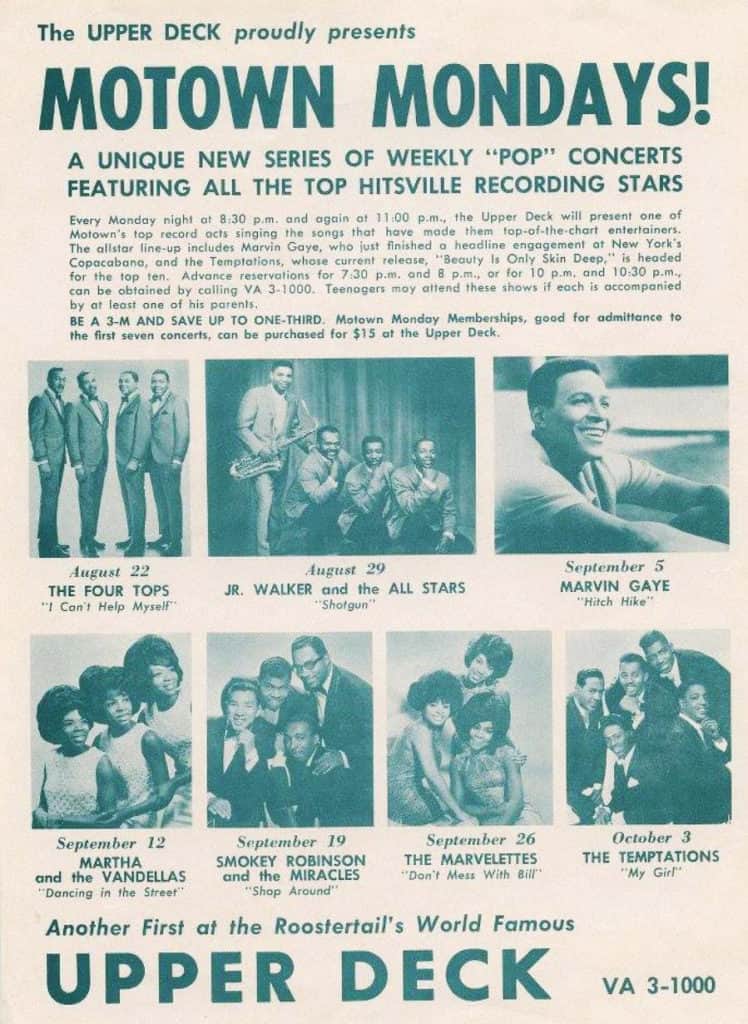 Create mutually beneficial partnerships – Maruca became friends with Berry Gordy while the latter was still working at the local Ford plant. Out of that friendship came creative partnerships that included the “Motown Monday” shows at Detroit’s Roostertail Club and unique access to Motown artists in the crucial 6-10PM time slot when DJ Scott Regen was connecting with the teenage audience. When Stevie Wonder released “Uptight”, it debuted, with the artist in studio singing along, on Keener.
Create mutually beneficial partnerships – Maruca became friends with Berry Gordy while the latter was still working at the local Ford plant. Out of that friendship came creative partnerships that included the “Motown Monday” shows at Detroit’s Roostertail Club and unique access to Motown artists in the crucial 6-10PM time slot when DJ Scott Regen was connecting with the teenage audience. When Stevie Wonder released “Uptight”, it debuted, with the artist in studio singing along, on Keener.
Go where your audience lives and build relationships there – Maruca came up with a creative way to get the word out about Keener’s forthcoming transformation to the indispensible teen audience. “Two weeks before we went on the air with the Keener brand,” he remembers, “We had a press conference and invited all the high school newspapers to attend. So we got written up in just about every high school newspaper in the 3-county area. That’s the trick in all of marketing, not just radio: give the consumers something they want and then find a way to wrap your arms around that so they don’t forget you.”
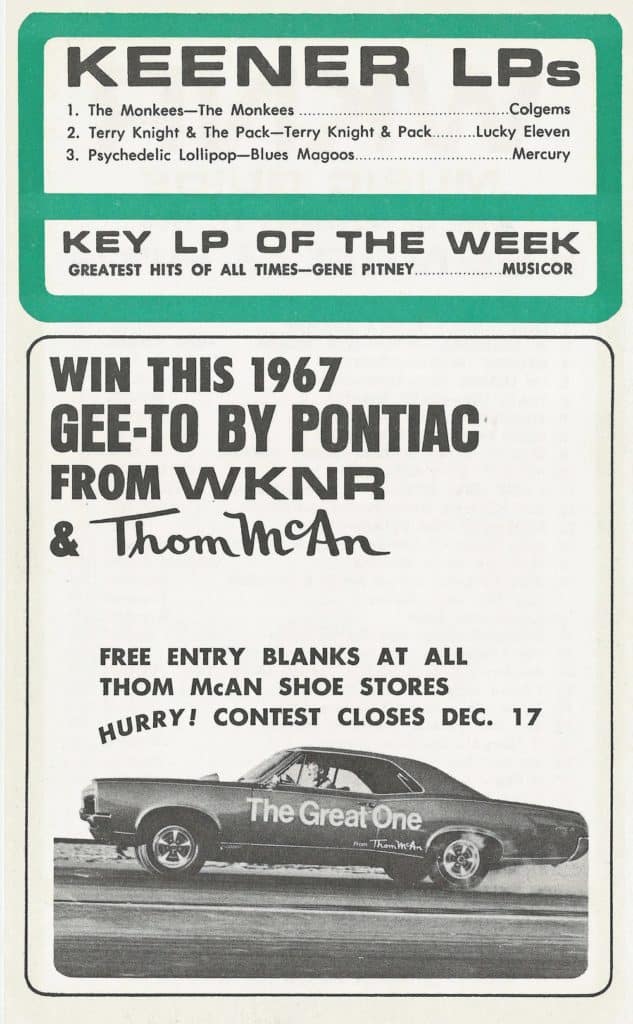 Help your advertisers get rich and you’ll get rich, too – Incredibly, no station had effectively tapped the power of the auto industry culture in Detroit. Maruca became friends with John DeLorean, who was developing the GTO for Pontiac. And Keener became the first station to give the new muscle car away as a prize. The contest drove hundreds of listeners to showrooms and supercharged auto sales across the board.
Help your advertisers get rich and you’ll get rich, too – Incredibly, no station had effectively tapped the power of the auto industry culture in Detroit. Maruca became friends with John DeLorean, who was developing the GTO for Pontiac. And Keener became the first station to give the new muscle car away as a prize. The contest drove hundreds of listeners to showrooms and supercharged auto sales across the board.
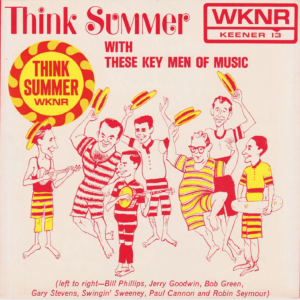 “IBM was using the word think in their advertising in the 60’s,” Maruca said. “I took that and added the word summer to make Think Summer and put up 50 billboards all around the city in February. They said ‘Think Summer: A Community Service of WKNR.’ And we got editorials in the local papers about what a wonderful thing we had done and what a positive feeling the promotion created. The churches were even preaching sermons about Think Summer because it was so positive. Columbia Records heard about it and wrote a song for us called Think Summer, recorded by Susan Wayne. We got all this tremendous feedback from the newspapers, and I took it one step further. I gave every new car dealer in the 3-county area a Think Summer package that included big window banners: ‘Think Summer, Buy Your New Car Now.’ The dealers went crazy! One dealer called me one day and said he had just dumped 2 tons of sand in his showroom and wanted to know where he could get 3 palm trees.”
“IBM was using the word think in their advertising in the 60’s,” Maruca said. “I took that and added the word summer to make Think Summer and put up 50 billboards all around the city in February. They said ‘Think Summer: A Community Service of WKNR.’ And we got editorials in the local papers about what a wonderful thing we had done and what a positive feeling the promotion created. The churches were even preaching sermons about Think Summer because it was so positive. Columbia Records heard about it and wrote a song for us called Think Summer, recorded by Susan Wayne. We got all this tremendous feedback from the newspapers, and I took it one step further. I gave every new car dealer in the 3-county area a Think Summer package that included big window banners: ‘Think Summer, Buy Your New Car Now.’ The dealers went crazy! One dealer called me one day and said he had just dumped 2 tons of sand in his showroom and wanted to know where he could get 3 palm trees.”
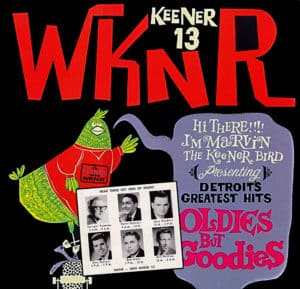 Always give back to the community – Keener’s air staff connected their professional brands with charitable work. Mid-day host, Jerry Goodwin raised over $1 million in 2018 dollars for Danny Thomas’ ALSAC charities.
Always give back to the community – Keener’s air staff connected their professional brands with charitable work. Mid-day host, Jerry Goodwin raised over $1 million in 2018 dollars for Danny Thomas’ ALSAC charities.
Maruca noted that WKNR, “..produced an oldies but goodies album every year and sold it in the record stores and turned all of the proceeds of those albums over to a different charity every year. We would sell 20,000 of those albums in 3 weeks.”
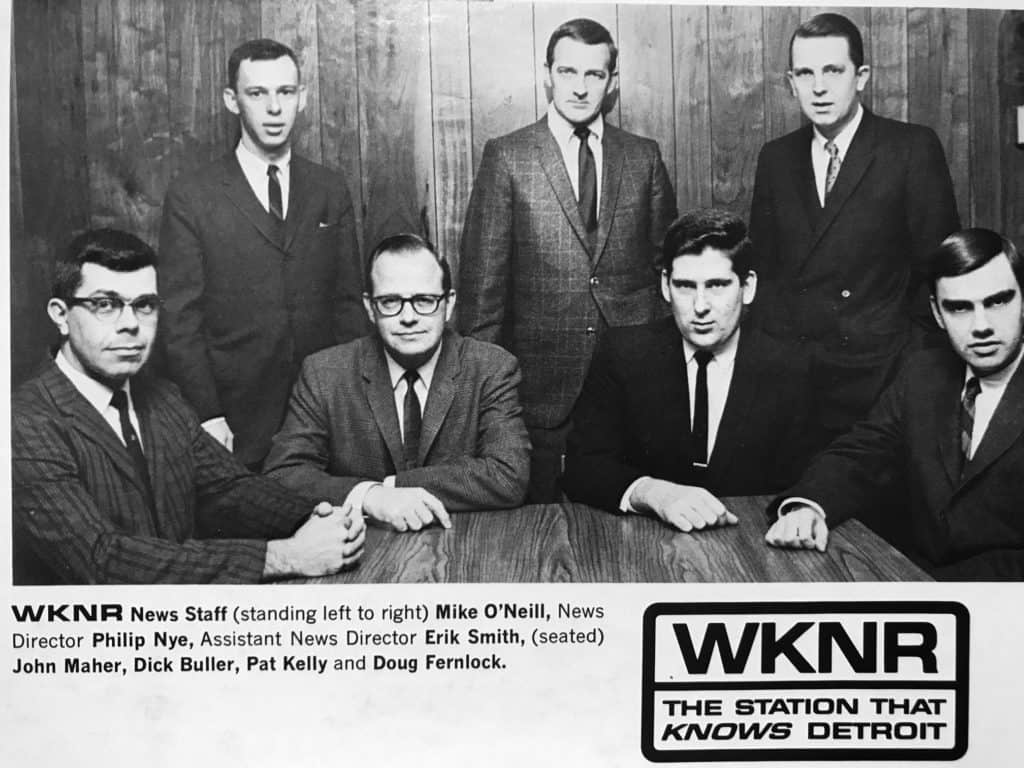 The listener wants more than just music – While the concept of top-40 radio may have been born on top of the radio jukebox idea where music was a centerpiece, Marcua realized that building a strong connection with the community included interpreting the changing cultural landscape in a meaningful way. He hired a seasoned journalist, Philip Nye, as news director and built a full time staff of 8 to cover Detroit. “We won the Associated Press award for best newsroom five years in a row. I had cars equipped with 2-way radios. It sounded like network news. We used a lot of tape. We put good Electro Voice microphones on Sony cassette recorders. And at the end of each year, we would build a news album called ‘Detroit 1965’ or ‘Detroit 1966.’ I had a photographer who took pictures of everything we did and we designed wonderful covers. It was a 60-minute program, 30 minutes on each side, of all the year’s news events in Detroit.” The idea wasn’t to make money, it was to embed the Keener brand into the community. “I sent a box of 25 to every high school in the 3-county area so they could use them in their social studies classes. The schools went crazy over that! We wrapped our arms around the community; that’s how we did it.”
The listener wants more than just music – While the concept of top-40 radio may have been born on top of the radio jukebox idea where music was a centerpiece, Marcua realized that building a strong connection with the community included interpreting the changing cultural landscape in a meaningful way. He hired a seasoned journalist, Philip Nye, as news director and built a full time staff of 8 to cover Detroit. “We won the Associated Press award for best newsroom five years in a row. I had cars equipped with 2-way radios. It sounded like network news. We used a lot of tape. We put good Electro Voice microphones on Sony cassette recorders. And at the end of each year, we would build a news album called ‘Detroit 1965’ or ‘Detroit 1966.’ I had a photographer who took pictures of everything we did and we designed wonderful covers. It was a 60-minute program, 30 minutes on each side, of all the year’s news events in Detroit.” The idea wasn’t to make money, it was to embed the Keener brand into the community. “I sent a box of 25 to every high school in the 3-county area so they could use them in their social studies classes. The schools went crazy over that! We wrapped our arms around the community; that’s how we did it.”
Associate advertisers with every dimension of your brand in a creative way – Keener’s music guides were a huge hit and became a popular advertising vehicle, too.
“We surveyed record sales in 75 record stores every week. The reason we surveyed so many is that Detroit was known to have 5 percent of the nation’s record sales in those days, and I had to watch out for payola. I needed to be sure record companies weren’t paying off the record stores. That’s why I did 75, to protect us. Then we would print 75,000 copies of the music guide and distribute them every Friday morning to the record stores. I gave the back of it to big advertisers. Nobody had ever thought about that.”
Many of the things that Frank Maruca pioneered became common practice at the more successful hit music stations that emerged in the 1960s. And if you look deeply into some of today’s most successful brands, like Apple, Amazon and Google, you’ll find a bit of Frank Maruca’s magic dust in the mix.
When Keener Was Young
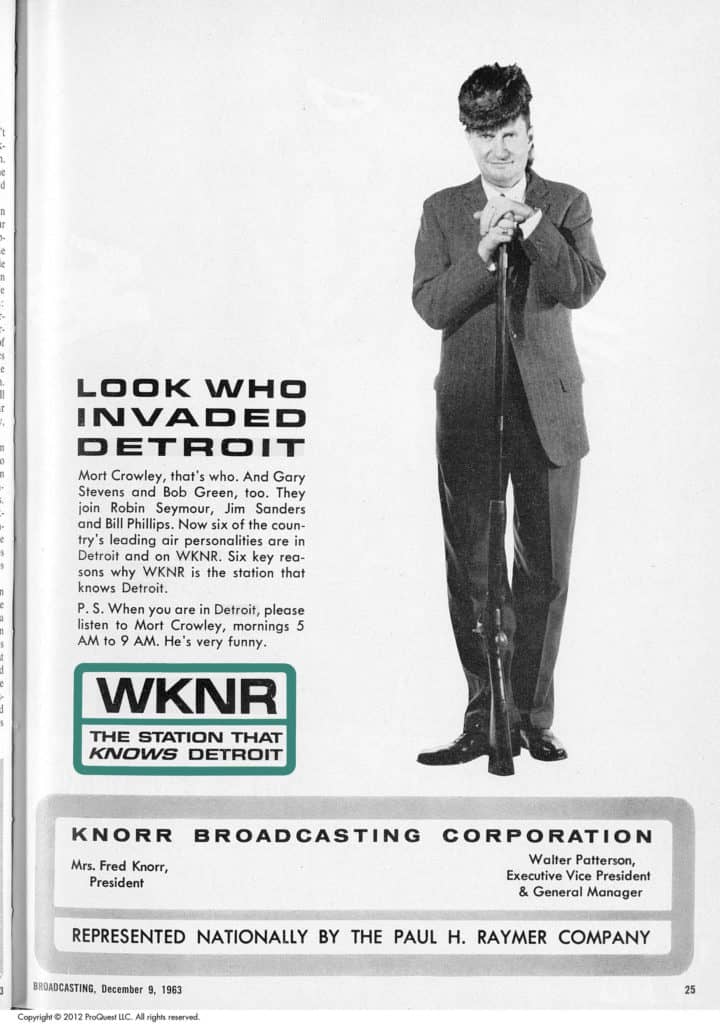 By December of 1963, the Keener phoenominon had captivated the Motor City. The station was rocketing to the top of the Detroit radio ratings with the winning combination of entertaining announcers, a tight playlist of proven hits and an “intelligent flexibility” given to the jocks to experiment.
By December of 1963, the Keener phoenominon had captivated the Motor City. The station was rocketing to the top of the Detroit radio ratings with the winning combination of entertaining announcers, a tight playlist of proven hits and an “intelligent flexibility” given to the jocks to experiment.
Keener burst onto the scene in the midst of a changing American scene. We were still processing the assassination of John F. Kennedy. The Warren Commission was convened on December 3rd to investigate. Malcolm X gave his famous “Message to the Grass Roots” speech in Detroit. The first video tape instant replay was demonstrated by CBS TV Director, Tony Verna during a telecast of the Army/Navy football game. When Mort Crowley appeared in a full page ad for WKNR in the December 9th edition of Broadcasting Magazine, The Beatles had yet to explode on the American scene. I Saw Her Standing There & I Want to Hold Your Hand would be released on December 26th.
The December 19th edition of the WKNR Music Guide featured for acts from Berry Gordy’s labels. The Marvelettes, the Supremes, Martha and the Vandellas and the Miracles were all getting airplay. Rock and Roll was still intermingled with what would, in a year, be considered “middle of the road”. Bobby Vinton’s There I’ve Said It Again was at Number 1, juxtaposed with the garage grunge Surfin Bird from the Trashmen at number 4. Keener’s very first number one song, The Kingsmen’s Louie Louie was still in the top 10 and Chuck Berry’s The Twist was the top rated LP.
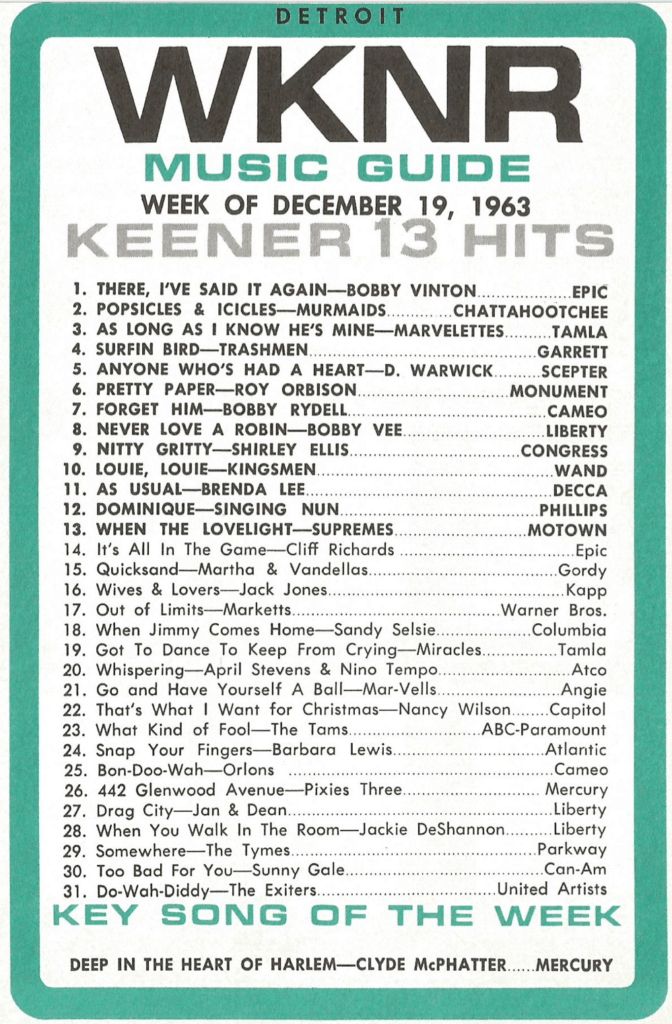 On television, The Fugitive, The Patty Duke Show and Burke’s Law premiered on ABC. Petticoat Junction began its 7 year run on CBS. And Mutual of Omaha’s Wild Kingdom was finishing the first of 25 seasons on NBC. The Jetsons, Hawaiian Eye and Leave It To Beaver ended their prime time runs. Being close to the border, many of us were fans of the CBC’s Hockey Night in Canada. Gordie Howe and the Detroit Red Wings remained our favorite NHL team.
On television, The Fugitive, The Patty Duke Show and Burke’s Law premiered on ABC. Petticoat Junction began its 7 year run on CBS. And Mutual of Omaha’s Wild Kingdom was finishing the first of 25 seasons on NBC. The Jetsons, Hawaiian Eye and Leave It To Beaver ended their prime time runs. Being close to the border, many of us were fans of the CBC’s Hockey Night in Canada. Gordie Howe and the Detroit Red Wings remained our favorite NHL team.
It was a year of big screen blockbusters. Cleopatra, Alfred Hitchcock’s The Birds, It’s a Mad, Mad, Mad, Mad World and the Cinerama masterpiece, How The West Was Won were all doing boffo box office. A journeyman actor from England named Sean Connery appeared in the first installment of the James Bond series, Dr. No. Walt Disney had two entries in the top 10 grossing films of 1963, The Sword in the Stone and Son of Flubber.
Trolls, the Vac-u-Form and Kenner’s Easy Bake Oven were the most requested items on kids’ Christmas lists.
The Keener Key Men of Music in December of 1963 featured Mort Crowley in the morning, Gary Stevens, Bob Green, Robin Seymour, Jim Sanders and Bill Phillips, essentially the starting line-up the station had debuted when it flipped formats on Halloween night.
For those who grew up in Detroit in the 1960s, these memories are likely still fresh, from a time before our phones were in our pockets and radio was a secondary source for news and entertainment. We still mourned Kennedy, had yet to process the impact of the Vietnam war and believed that championship seasons were still ahead for the Wings, the Tigers and the Lions.
Radio was at the center of our collective consciousness, at home and in the car. And our relationships with the entertainers behind the mic that was just as important as the tunes we were humming.

Our aircheck of the week features Keener’s afternoon drive ace, Gary Stevens, recorded 7 months later, in July of 1964. Here he is at his zany best, featuring the Wollyburger, Keener Baseball, the British Invasion and more. Gary would graduate to the Big Apple, become a pirate radio legend in England and then move behind a desk as one of the most successful broadcast executives of the era.
WKNR – December 8, 1965
 In December of 1965, the Vietnam war was raging in Southeast Asia. St. Louis residents were still marveling at the recently completed Gateway Arch. Pillsbury introduced a new spokesman, someone they called the doughboy. We were still humming Beatle tunes from their film, Help!, in the wake of their 4th and final appearance on the Ed Sullivan Show. The Detroit Red Wings were just under 500 on the season, hoping to extend a 4 game winning streak as they prepared to host the New York Rangers at Olympia Stadium. We were driving cars with maize and blue Michigan license plates, watching Divorce Italian Style on the Channel 7 late movie, and on CBS, promos were running for the Saturday night debut of “A Charlie Brown Christmas”.
In December of 1965, the Vietnam war was raging in Southeast Asia. St. Louis residents were still marveling at the recently completed Gateway Arch. Pillsbury introduced a new spokesman, someone they called the doughboy. We were still humming Beatle tunes from their film, Help!, in the wake of their 4th and final appearance on the Ed Sullivan Show. The Detroit Red Wings were just under 500 on the season, hoping to extend a 4 game winning streak as they prepared to host the New York Rangers at Olympia Stadium. We were driving cars with maize and blue Michigan license plates, watching Divorce Italian Style on the Channel 7 late movie, and on CBS, promos were running for the Saturday night debut of “A Charlie Brown Christmas”.
Keener’s playlist reflected the eclectic tastes of a public that was still processing the evolution of rock and roll. Eddie Arnold and the Statler Brothers shared the field with Simon and Garfunkle, The Hollies and the Byrds. The British Invasion was in full swing with 4 acts in competition for ear time. The Underdogs were one of the Michigan garage bands who were seeking a second chart hit, while playing with the likes of Suzy Quatro and a Doug Brown and The Omens at Punch Andrews’s Hideout Night Clubs, the latter featuring a keyboard player from Ann Arbor by the name of Bob Seger. Toys like the Easy Bake Oven, GI Joe and Whamo’s Superball were among the most requested Christmas gifts. Advertisements for David Lean’s Dr. Zhivago were appearing in Detroit area newspapers. The film would open on December 22, joining The Greatest Story Ever Told and The Sound of Music as the year’s biggest blockbusters.
On the WKNR Music Guide, the number 1 song was Columbia Records’ reinvention from Simon and Garfunkle’s Wednesday Morning, 3AM LP. The Sounds of Silence had flopped a year earlier, inspiring producer Tom Wilson to bring bassist Joe Mack, drummer Buddy Salzman and guitarists Vinnie Bell and Al Gorgoni into the studio to overdub an electrified backing track. Done without the duo’s knowledge, this gave the record a competitive edge in a field filled with electric competition.
The Beatles’ Day Tripper & We Can Work It Out, became one of the station’s highest debuting double sides, opening at number 4. Power rotation also included iconic hits like the Hollies’ Look Through Any Window, James Brown’s signature I Got You and the Vogues ode to the working man, 5 O’clock World. The James Bond film Thunderball was still in circulation at neighborhood theiaters, along with Tom Jones’ theme song. And The Lovin Spoonful’s follow up to Do You Believe in Magic, You Didn’t Have to Be So Nice, was in it’s second week on the charts.

Keener was in it’s prime as a Detroit radio brand, as is showcased in this classic Bob Green aircheck. The Letter from Santa contest distributed Kodak’s Instamatic cameras across the Motor City. Lucky license numbers and The Keener Word of the day were perennial promotions. Bob’s conversational energy is both engaging and infectious, reflecting the Intelligent Flexibility maxim that was at the key ingredient Keener’s secret sauce. You can hear other familiar voices, including Paul Cannon and Ted Clark and classic Detroit advertisers are in evidence, including Gene Merollis Chevrolet. Behind it all is the classic WKNR reverb, crafted from a Hammond Organ spring by chief engineer, Jerry Martin.
Listening again to the Keener sound reminds us that, then as now, communications is about building relationships. We are engaged to the extent that we feel part of the magic. And in the mid 1960s few things were more engaging than WKNR.
How Keener Covered the Summer of ’67
It began with a raid on an unlicensed after hours bar, “a blind pig” in the parlance of that time. 5 days later 43 had died, nearly 1,200 were injured, over 2,000 buildings had burned and more than 7,000 were arrested. It became known as the 1967 12th Street Riot (#Rebellion67 is the hash tag being used on Twitter), at the time the largest riot since the Civil War. It would not be surpassed until 1992 when Los Angeles erupted in the wake of the Rodney King beating.
Units of the Michigan Army National Guard and ultimately the 82nd and 101st Airborne Divisions were deployed to quell the unrest and the reverberations of the event still echo to the present day.
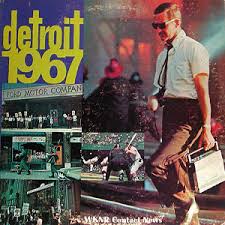 WKNR Contact News provided extensive coverage of the story, which featured prominently in Keener’s annual documentary production, “Detroit 1967“.
WKNR Contact News provided extensive coverage of the story, which featured prominently in Keener’s annual documentary production, “Detroit 1967“.
News Director Philip Nye deployed WKNR’s 8 man staff throughout the impacted area. “At it’s peak,” he remembered, “the riots spread over fourteen-square miles of the city. A curfew was in effect, a complete ban placed on liquor sales, gasoline can be purchased only during certain hours and never in a container, offices, banks, schools, businesses, industries were closed down; the heart of Detroit was deserted. Deliveries were curtailed. Food ran short. All normal activities in the nation’s fifth-largest city was at a standstill.”
“Police sealed off 12 street hoping to contain the riot. It didn’t work. All available firemen were called to duty, trying to battle the burgeoning number of blazes. It became nearly an impossible task. Time after time they were the targets of bricks and bottles at a fire scene. Later those bricks and bottles became bullets. Like a plague it spread, moving west and northwest across Woodward. It was out of control. At a command post downtown, city officials were joined by Michigan Gov. Romney. State police were called in, the National Guard mobilized and finally federal troops requested… By Thursday, it had run its course. Troops were told that sheathe their bayonets. On Friday the last major fire was reported.”
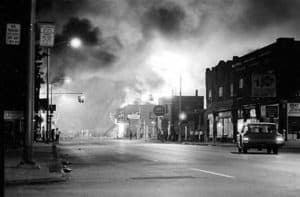
The Detroit Free Press won a 1968 Pulitzer Prize for it’s coverage and many of us who listened to WKNR back in the day remember visceral television images of black smoke curling into the summer sky.
Much was done in the wake of the riot to try and change the environment of anger and distrust. The success of initiatives like “New Detroit” and “Detroit Renaissance” are debated to this day.
In 1994, Detroit’s first African American mayor, Coleman Young, would write, “The heaviest casualty, however, was the city. Detroit’s losses went a hell of a lot deeper than the immediate toll of lives and buildings. The riot put Detroit on the fast track to economic desolation, mugging the city and making off with incalculable value in jobs, earnings taxes, corporate taxes, retail dollars, sales taxes, mortgages, interest, property taxes, development dollars, investment dollars, tourism dollars, and plain damn money. The money was carried out in the pockets of the businesses and the white people who fled as fast as they could. The white exodus from Detroit had been prodigiously steady prior to the riot, totaling twenty-two thousand in 1966, but afterwards it was frantic. In 1967, with less than half the year remaining after the summer explosion—the outward population migration reached sixty-seven thousand. In 1968 the figure hit eighty-thousand, followed by forty-six thousand in 1969.”
The summer of ’67 changed the nation, bringing uncomfortable realities to the forefront of our consciousness and changing the course of our dialogue about race, poverty and the American Dream forever.
Link – Listen to Detroit ‘ 67, the WKNR Contact News documentary about the year.
Link – Read Jim Feliciano’s excellent essay about the 12th Street Riot and WKNR’s coverage at the Motor City Radio Flashbacks website.
 Michigan Radio’s Stateside program is tweeting the events of #Rebellion67 in real time on twitter. Follow @StatesideRadio for the stream.
Michigan Radio’s Stateside program is tweeting the events of #Rebellion67 in real time on twitter. Follow @StatesideRadio for the stream.
Keener13.com Turns 15!
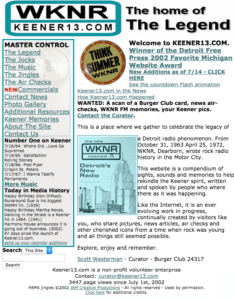 In June of 2002, Steve Schram and Scott Westerman were doing what they loved best: Staying up late and listening to WKNR airchecks. It was a habit that began when they first met at Michigan State University in the ’70s, but, as individuals their love for Keener had taken root a decade earlier, on that October evening in 1963 when WKMH took on new call letters and a new format.
In June of 2002, Steve Schram and Scott Westerman were doing what they loved best: Staying up late and listening to WKNR airchecks. It was a habit that began when they first met at Michigan State University in the ’70s, but, as individuals their love for Keener had taken root a decade earlier, on that October evening in 1963 when WKMH took on new call letters and a new format.
They didn’t know it then, but WKNR and the people who worked there, would set the standard for every future step in their professional careers. “How would Keener have done it,” became the question they would ask themselves as their own broadcasting adventures took shape. And now, as the clock passed 2AM, one of them, neither can remember which, came up with the idea of a creating website celebrating their favorite Detroit radio station.
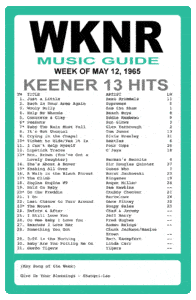 It didn’t take long to pull together the beginnings of what would become the largest collection of Keener memorabilia in existence. And on July 1, Keener13.com launched.
It didn’t take long to pull together the beginnings of what would become the largest collection of Keener memorabilia in existence. And on July 1, Keener13.com launched.
Since then, virtually every significant personality heard on WKNR has contributed something to the collection. The aircheck archive has been a source for researchers studying Detroit’s 60s history as Keener reflected it. Keener13.com has been referenced in television documentaries and in Andru Reeve’s famous, Turn Me On Dead Man – The Beatles and Paul McCartney Death Hoax. We’ve amassed a nearly complete collection of every WKNR Music Guide. There’s the “Inside Keener” library of weekly staff memos that chronicled the comings and goings. And the Keener photo gallery is filled with the famous faces we associated with the voices we knew so well.
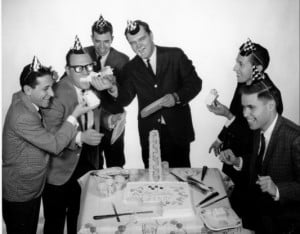 This website has spawned a number of celebratory events. For two summers, we were honored to produce special broadcasts on Keeners 1310 Khz frequency during the Woodward Dream Cruise. A collectable series of Keener Podcasts were created. Keener personalities were honored celebrities in a series of Detroit Radio Reunions over the years. And in the summer of 2014, we were proud to participate in a reunion of many of the original Keener Keymen in New York City.
This website has spawned a number of celebratory events. For two summers, we were honored to produce special broadcasts on Keeners 1310 Khz frequency during the Woodward Dream Cruise. A collectable series of Keener Podcasts were created. Keener personalities were honored celebrities in a series of Detroit Radio Reunions over the years. And in the summer of 2014, we were proud to participate in a reunion of many of the original Keener Keymen in New York City.
Along the way, Steve and Scott have occasionally taken to this space to mark key events in the lives of the Keener generation. We’ve said goodbye to some who have left us too soon, remembered moments in popular culture that shaped our attitudes about the world around us and shared the backstory on some of the personalities that are indelibly connected to the soundtrack of our lives.
 6 years ago, Keener13.com surpassed the lifetime of WKNR itself. We marked that event by launching the Keener Facebook Group and entering into the world of social media that would have been a significant, audience participation dimension of the station’s personality, had it existed back in the day.
6 years ago, Keener13.com surpassed the lifetime of WKNR itself. We marked that event by launching the Keener Facebook Group and entering into the world of social media that would have been a significant, audience participation dimension of the station’s personality, had it existed back in the day.

The Keener13.com project has been a labor of love, a reminder of how radio, at it’s best, could connect with an audience in an affirming, life changing way. A common statement made by everyone we’ve talked to who was connected with WKNR was that it was a defining moment in their lives. We share that sentiment.
And at every turn, we have been grateful for the essential contributions of people like you, folks who were touched by the Keener Magic and were willing to share your stories with us.
Thank you, for a decade and a half of great memories, and for making every season, Keener season!
Remebering Swingin Sweeney
By Scott Westerman curator@keener13.org
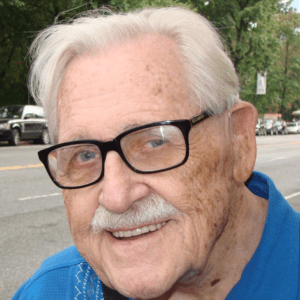 The Red Eye Grille straddles the northwest corner of 7th avenue and 59th street in New York City. It’s just blocks from the Ed Sullivan Theater where Letterman and Colbert performed and a short walk to the heart of Broadway. In the summer of 2014 it was the home for a reunion of many of the original Keener Keymen. In attendance were Bob Green, Jerry Goodwin, Gary Stevens and Robin Seymour, personalities from the dawn of WKNR’s notoriety. Scott Regen came soon after. John Meagher and Jim Brooker represented Contact News with Pat St. John and Jim Kerr representing the long tail of the Keener legend. Frank Maruca joined via Skype. At the center of the action was the man who found the venue, the host and sometime master of ceremonies, Frank “Swingin” Sweeney.
The Red Eye Grille straddles the northwest corner of 7th avenue and 59th street in New York City. It’s just blocks from the Ed Sullivan Theater where Letterman and Colbert performed and a short walk to the heart of Broadway. In the summer of 2014 it was the home for a reunion of many of the original Keener Keymen. In attendance were Bob Green, Jerry Goodwin, Gary Stevens and Robin Seymour, personalities from the dawn of WKNR’s notoriety. Scott Regen came soon after. John Meagher and Jim Brooker represented Contact News with Pat St. John and Jim Kerr representing the long tail of the Keener legend. Frank Maruca joined via Skype. At the center of the action was the man who found the venue, the host and sometime master of ceremonies, Frank “Swingin” Sweeney.
It’s now almost two years later as I meet Frank and his long time companion, Stephanie for lunch at that same hallowed location. It’s clear that he’s royalty here, warmly welcomed by the staff, who exude genuine love for an amazing spirit who became Keener’s second morning man in the wake of Mort Crowley’s dramatic departure. Continue reading “Remebering Swingin Sweeney” →

